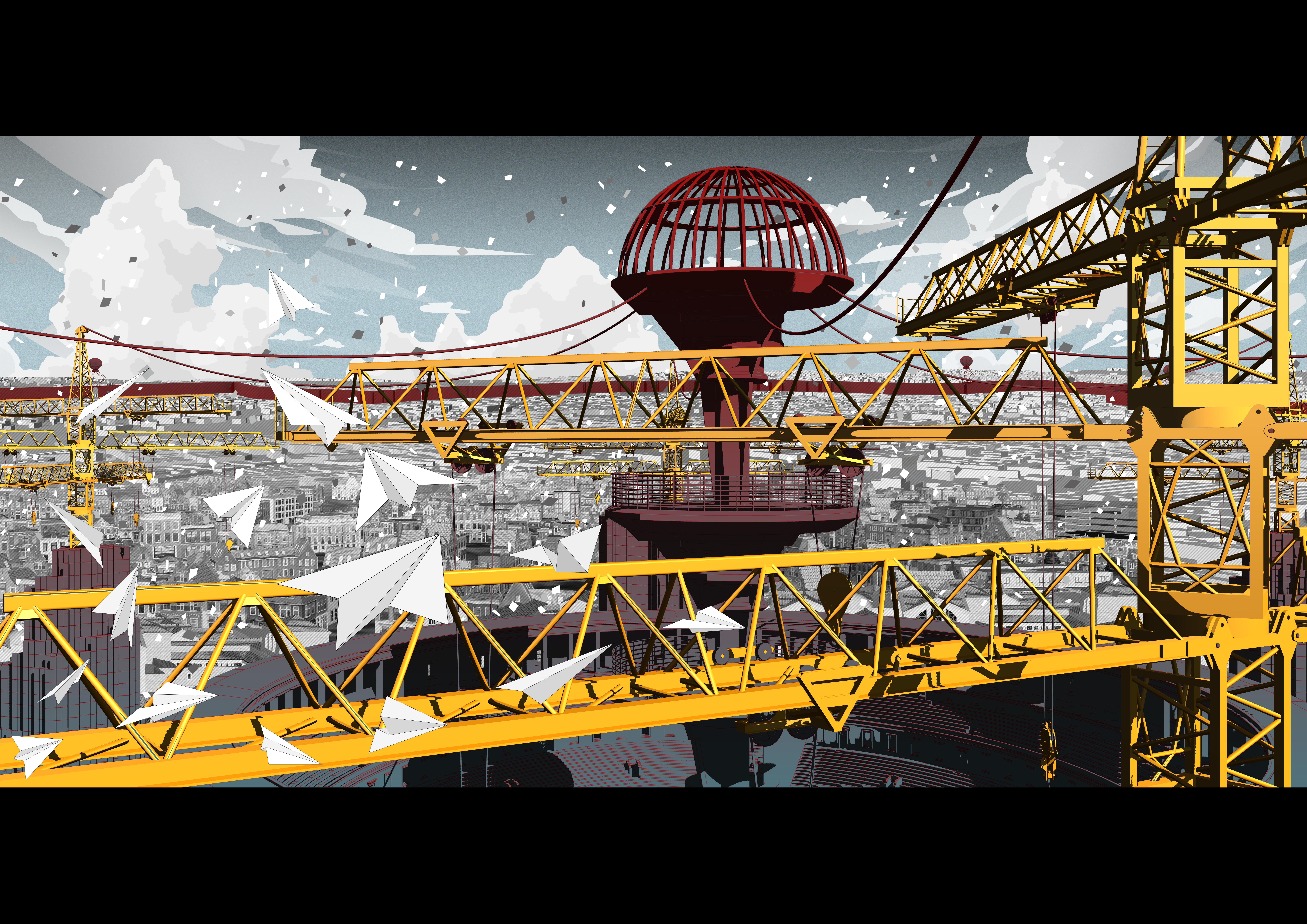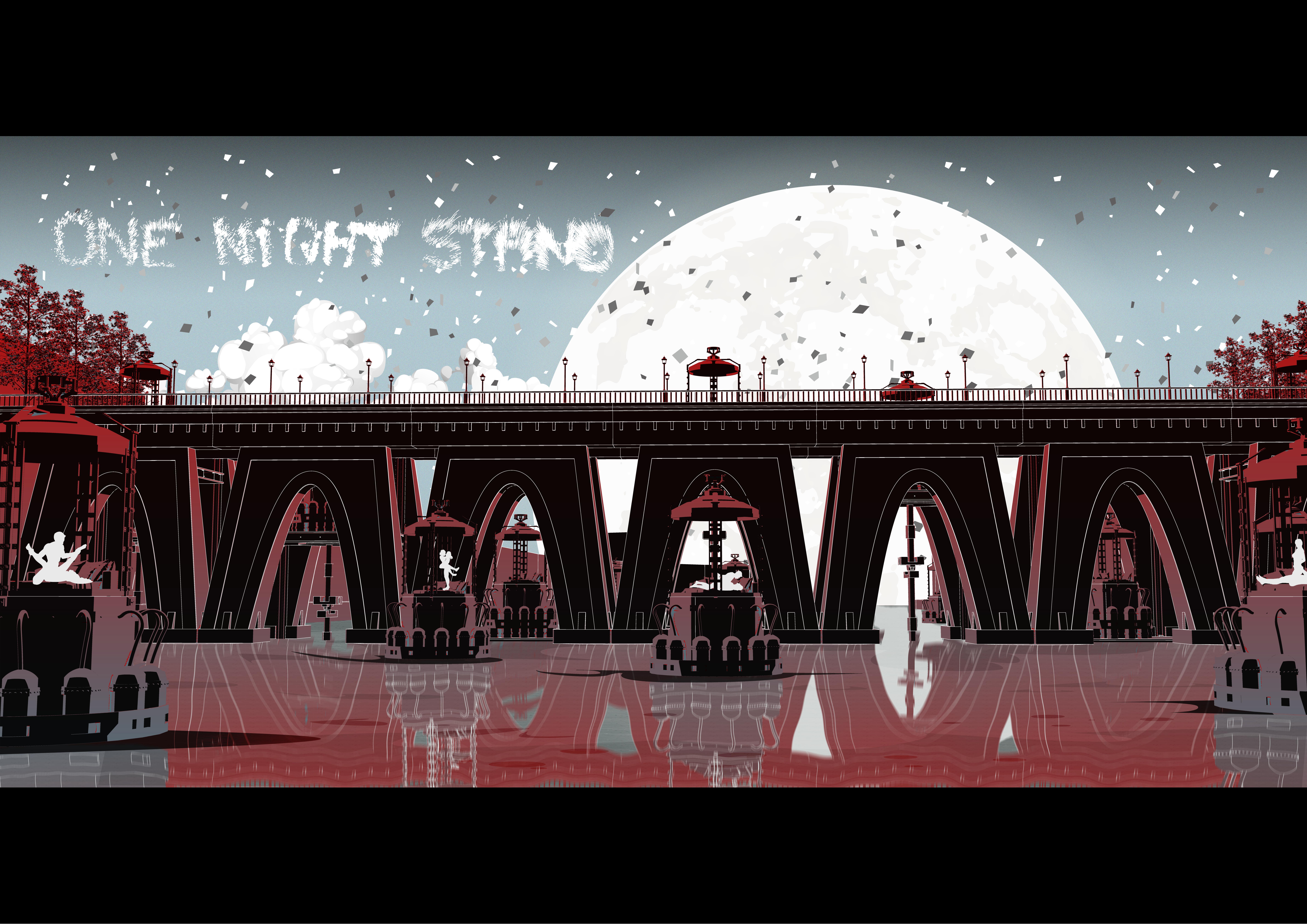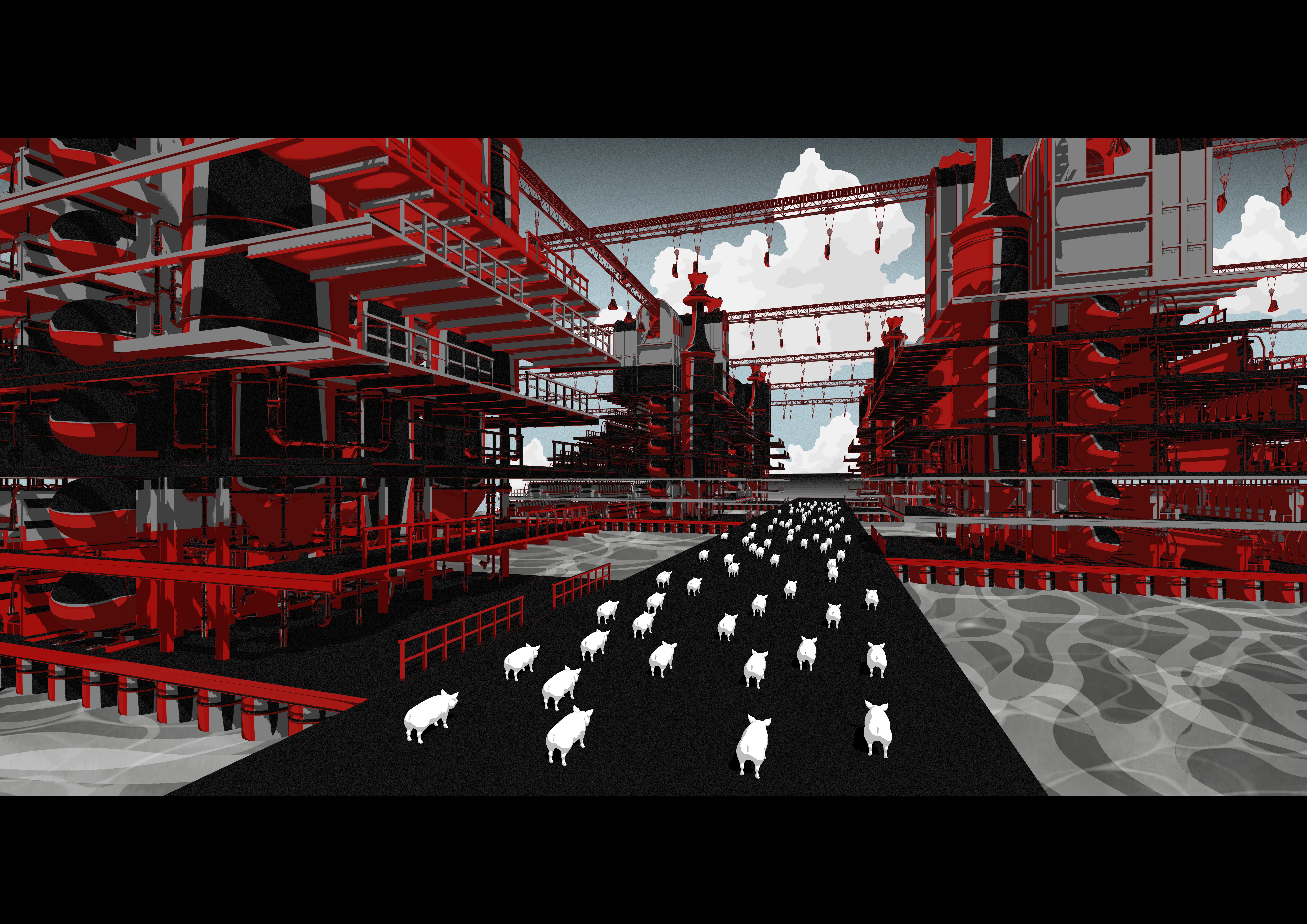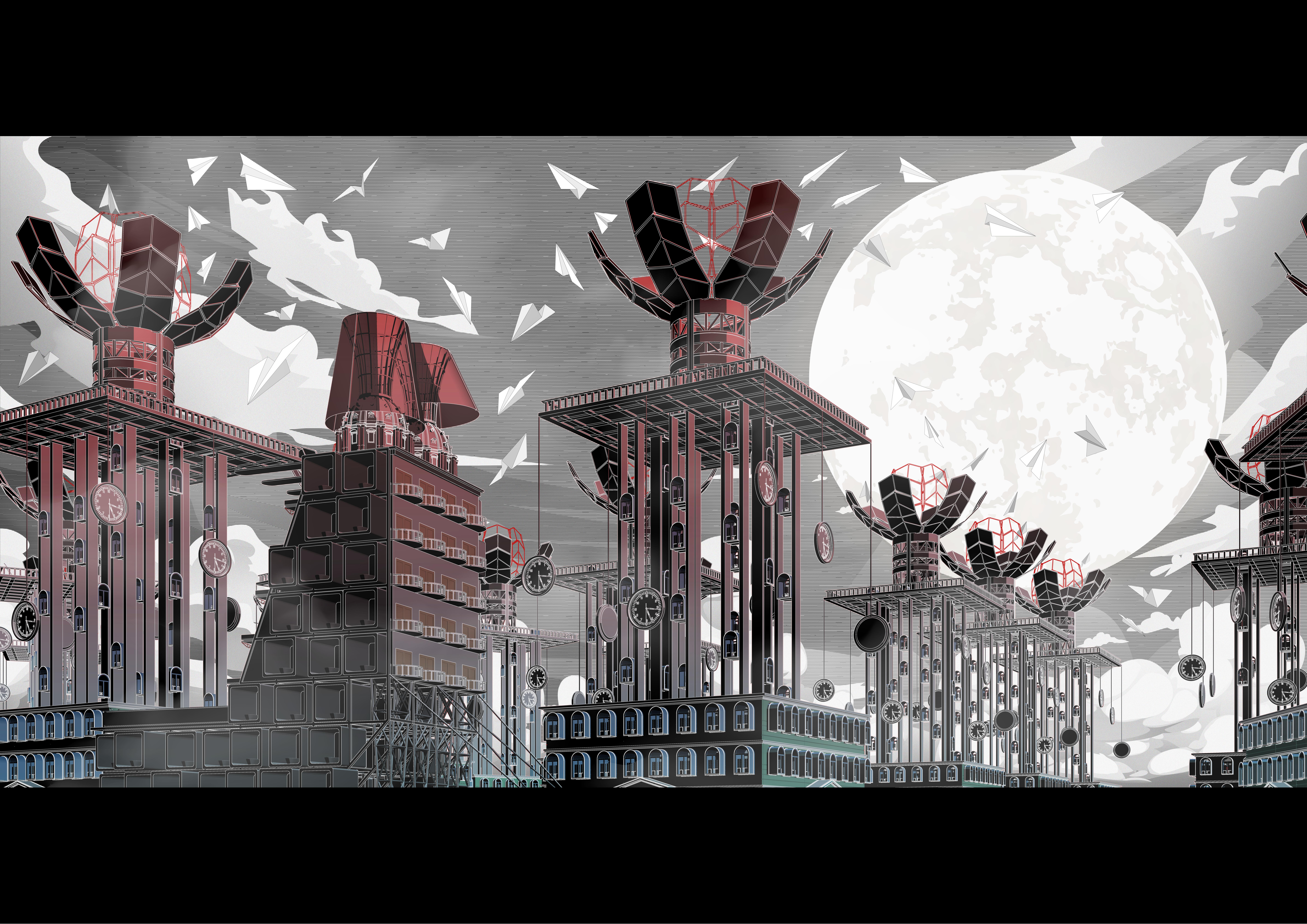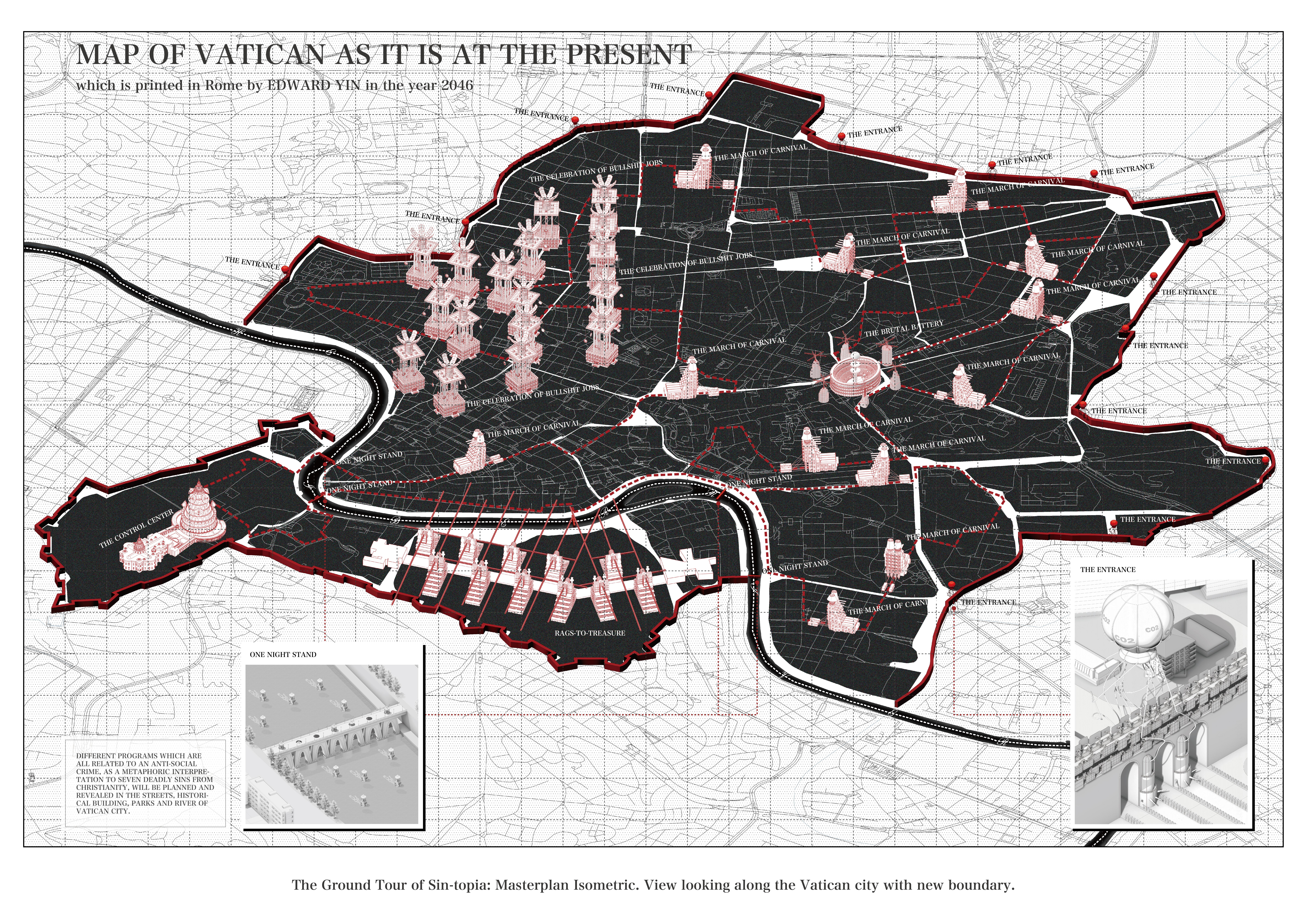A theory study on exploring new forms for social norms of deregulations in 21st century
CRITICAL THINKING:
We have conceived a lot of ideal utopian cities from ancient times to the present, but the imagination of modern utopia has led to various real social problems in society and urban, like the irrepressible criminal underclass, the gap between the rich and the poor in society,and the social discipline under a single mode of human behavior, and so on. History is littered with complex and deeply profound approaches,as they eager to reconcile rational solutions with actual human desires. Can we imagine a city in the opposite direction, a city that embraced the sins and crime, where people can have their freedom back to face “sin” and “desire” aggressively?
Might these designs relating to the sin simultaneously offer new imaginations regarding rigid social norms and dogmas and limitless indulgence for future generations?
SYNOPSIS:
As a satirical tale in post-religious era, Paradise lost offers an amoral vision of urban.It aims to redefines “sin” and “regulation” critically by provoking the question ‘What if the strategy of urban design was no longer about contradiction and tension, indoctrination and domestication?’ to criticise our social norms and regulation through extreme scenarios and comics.
We can reflect on contemporary urban planning, social structures and moral standards of today by re-examining what is “wrong” or “right”, re-thinking the social discipline and re-imaging a unlimited city where everyone can aggressively face their sins like envy, greed, sloth, etc., After the standard is defined, the desire is infinitely satisfied, it not promise a ‘carnival-ever-after’ but aims to bring awareness of good and evil of the social division.
Within the wall, this series of architcture forms a sinful journey that establishes the hedonistic science of coherent container that fully accommodate individual desires. The following story represents some detailful moments in the new vatican where the intense and absurd behavior replace the architecture to the primary position.
What is shown here is not all the events that occur in the new city enclave but the most representative and intense activities that make the morality glorious again by destroying it: The entrance(floating balloons are like lighthouse of joy), The march of carnival, The celebration of bullshit jobs(the paper airplanes that were blown into the air symbolize the meaningless of work in a merit society), Rags-to-treasure, One night stand(sex is a grand ceremony for everyone), The brutal battery(restore the Colosseum where wrath can generate electricity for the entire city), The control center(invisible authority is the most effective). Beside the dystopian tale with a satirical appearance, the phantom reality as a mirror of collective lost and subconscious madness under the dilemma of the general values ??of modern society continuously provide us with possible illusion.
The project starts with the research of utopia and dystopia, as two sides of one coin which presents a symbiotic relationship between good and evil, justice and crime.
Crime and the desire which tend to suppress the crime form the extreme political systems, technologies, social environments, and economic structures.
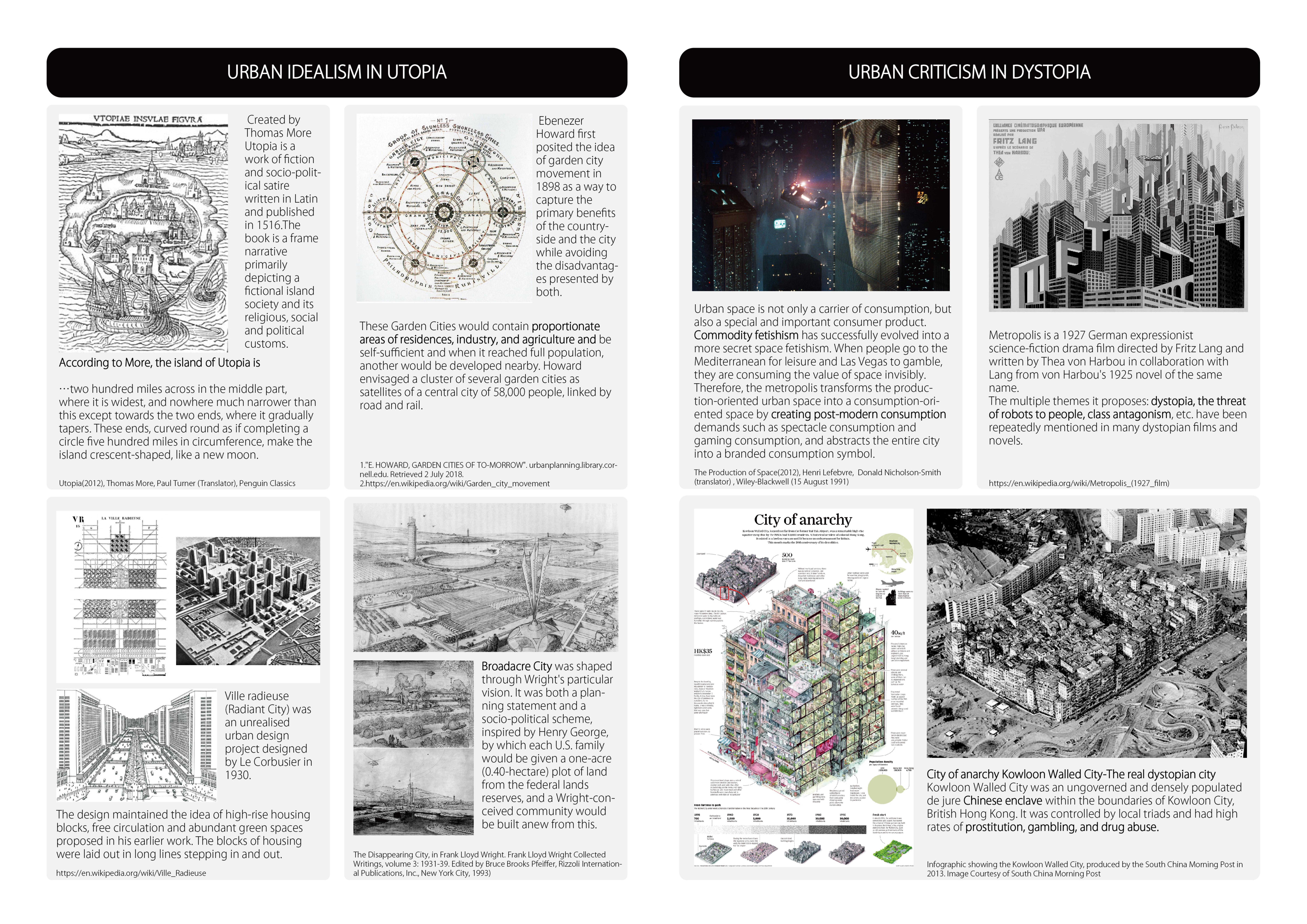

Hypothesis:
Inspired by Dante’s Divine Comedy and Milton’s Paradise Lost, this thesis as a cultural assumptions reimagine a fictional reality of city, examining the reconstruction of political culture, environment, and human desire towards to the cultural groundwork for future social transformations. By using architecture as a metaphor to maximize sin, the project provides a version of ethical responsibility, philosophically highlighting the loss of control and our true freedoms.
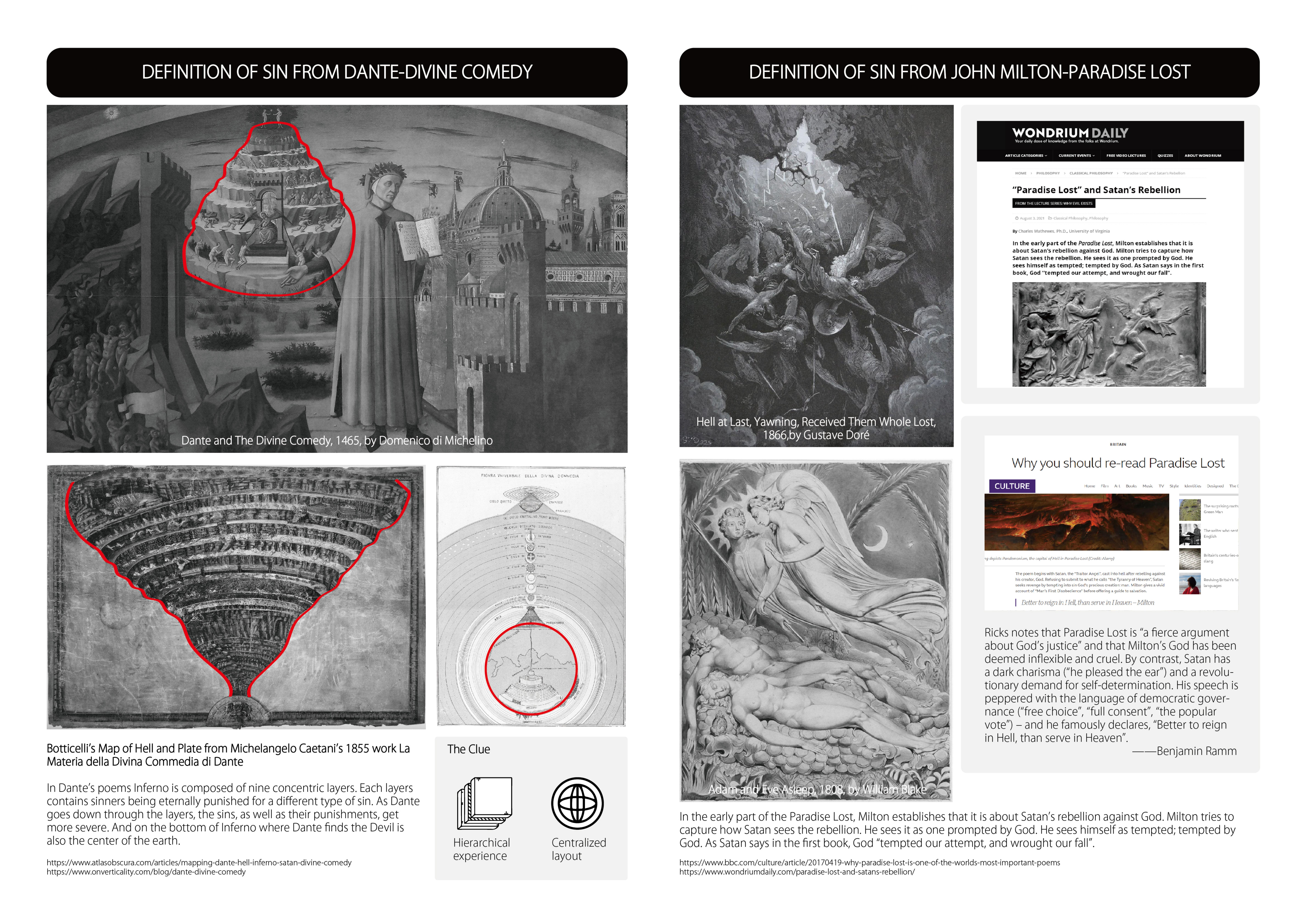
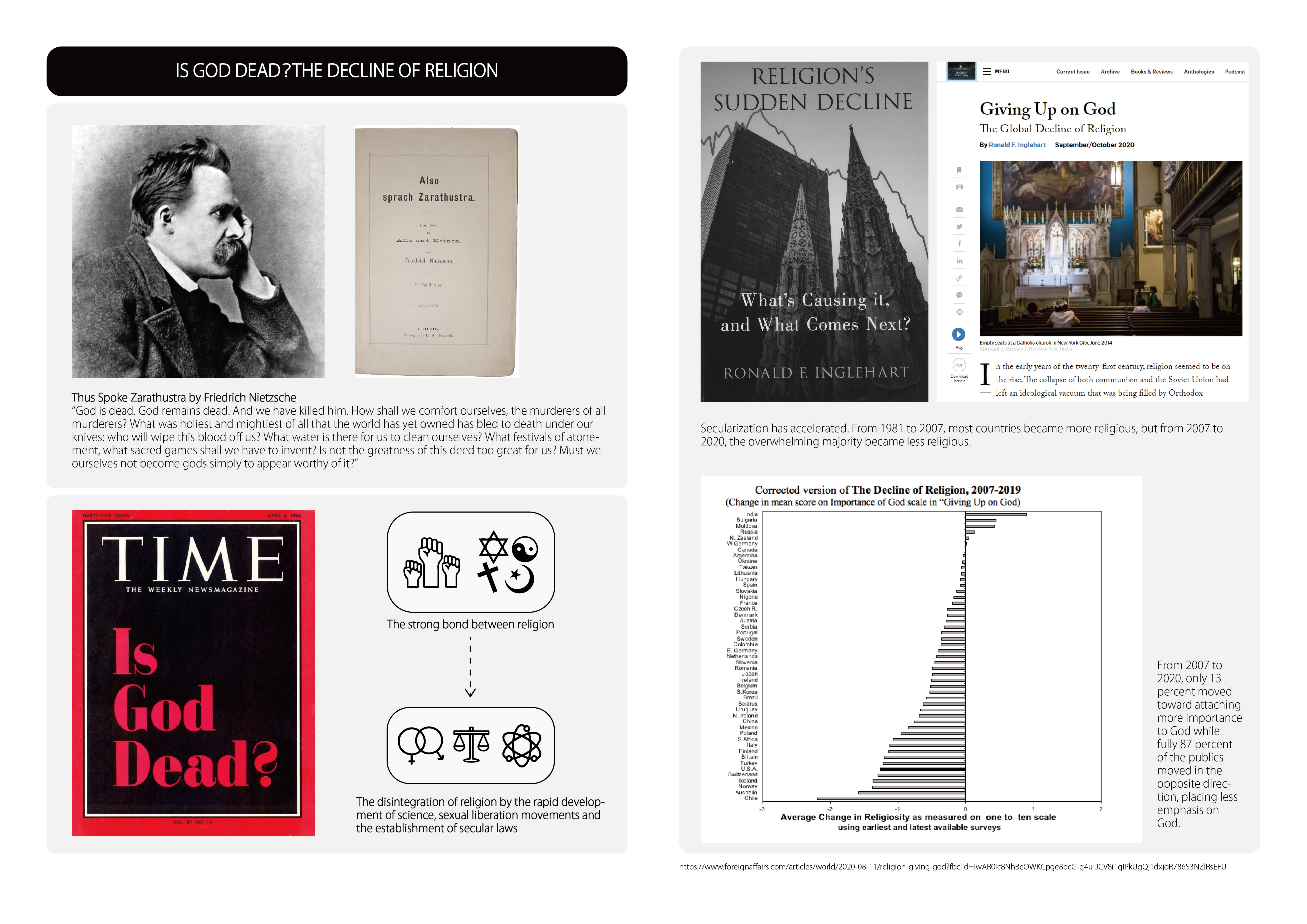
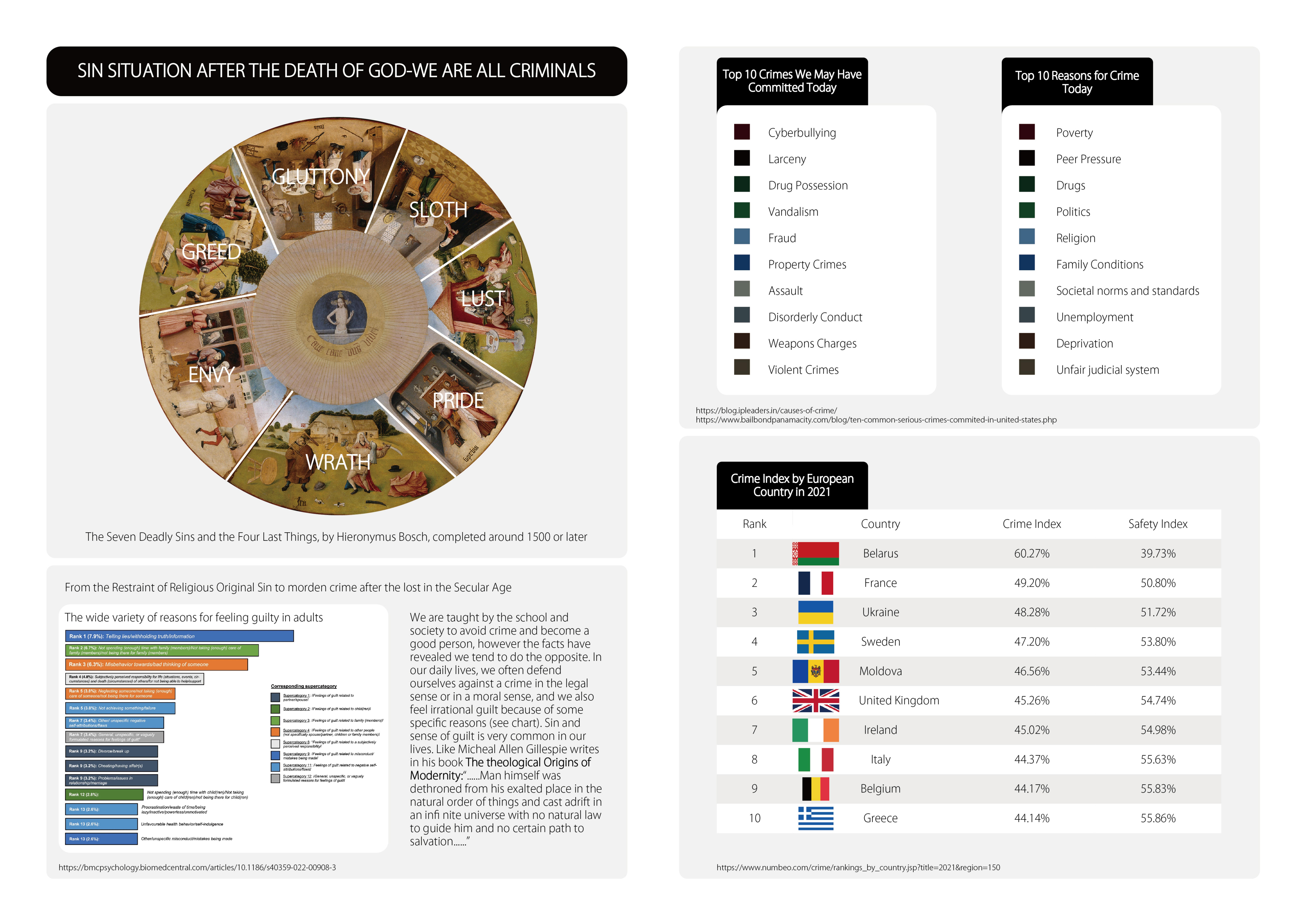
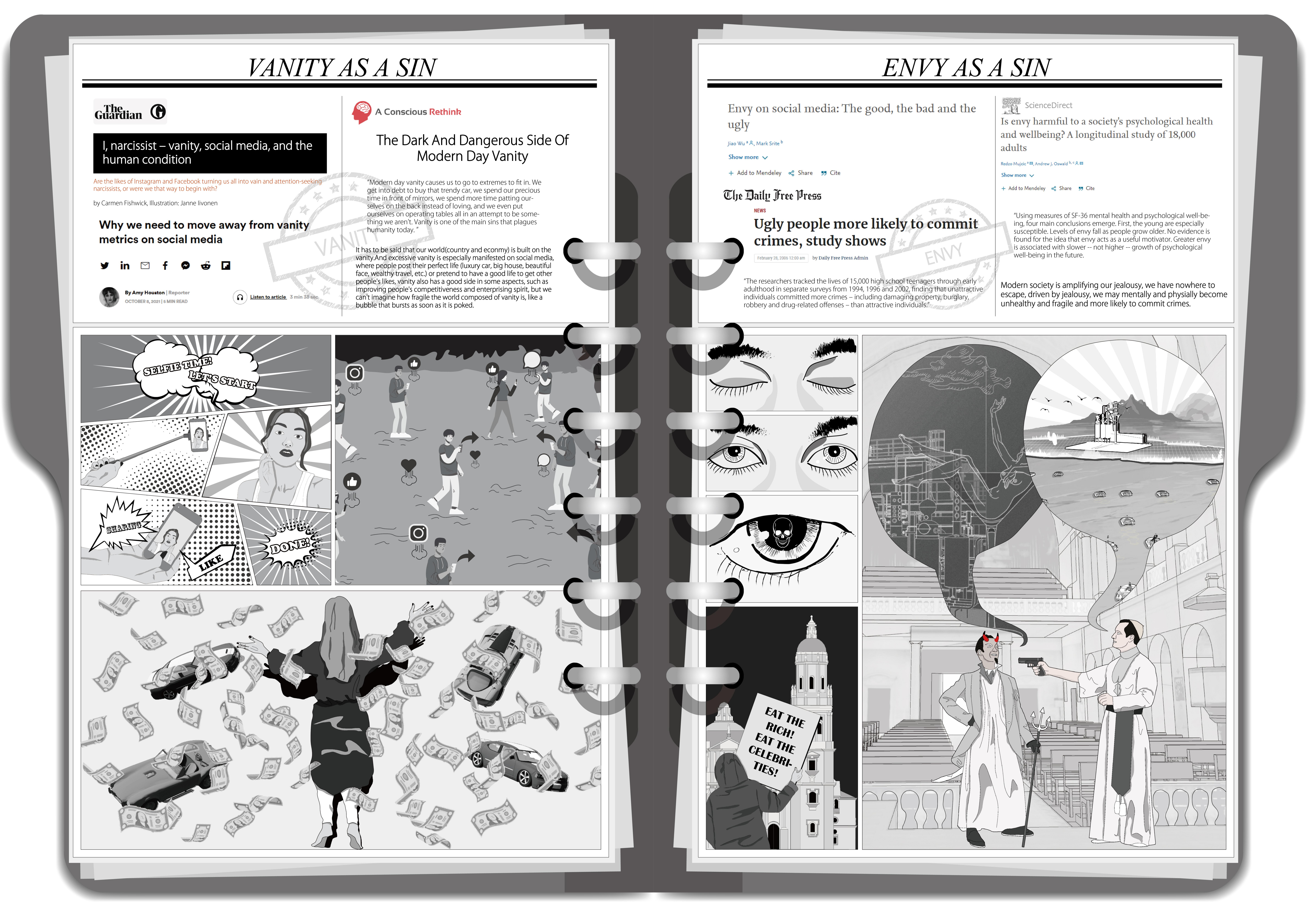
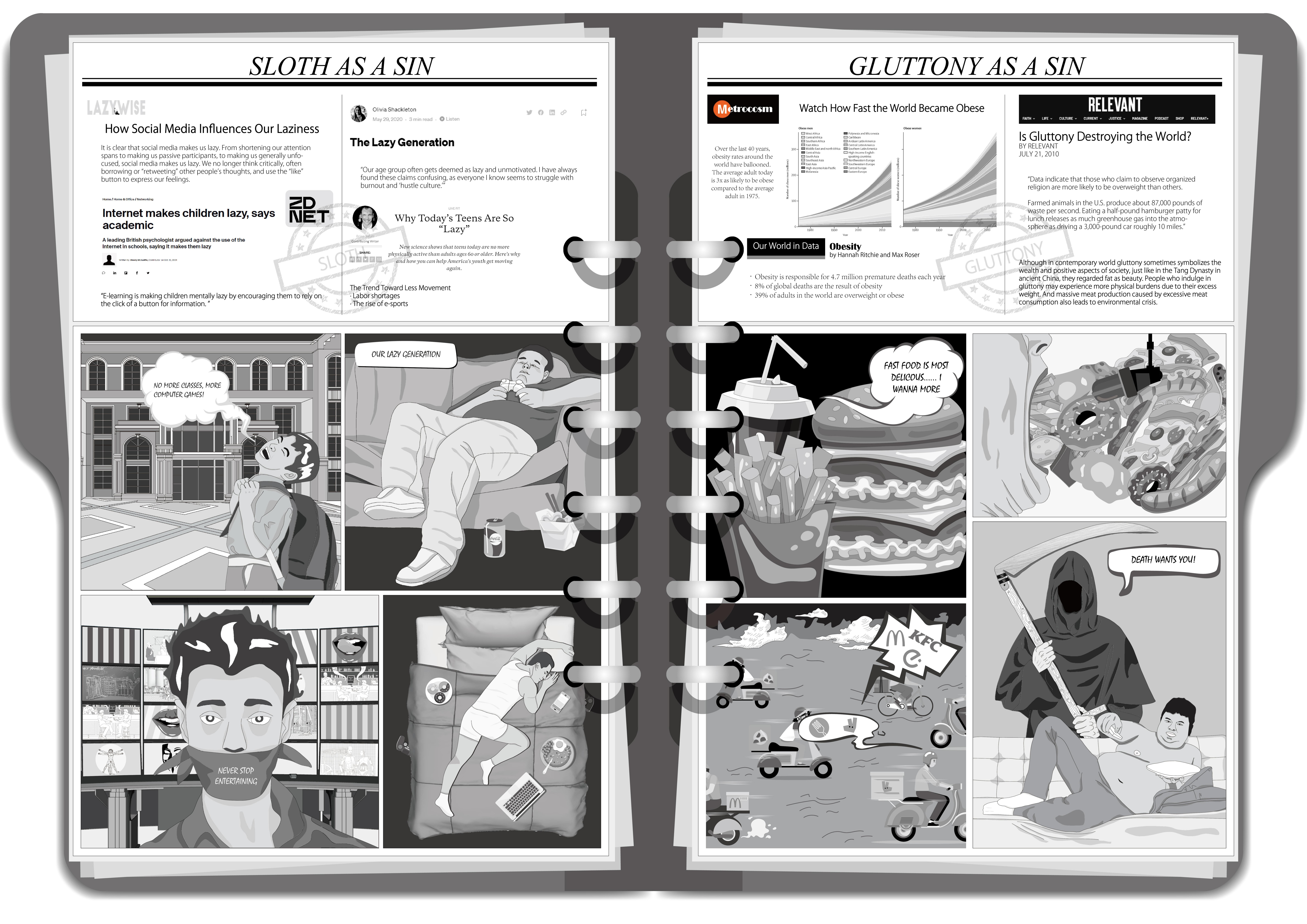
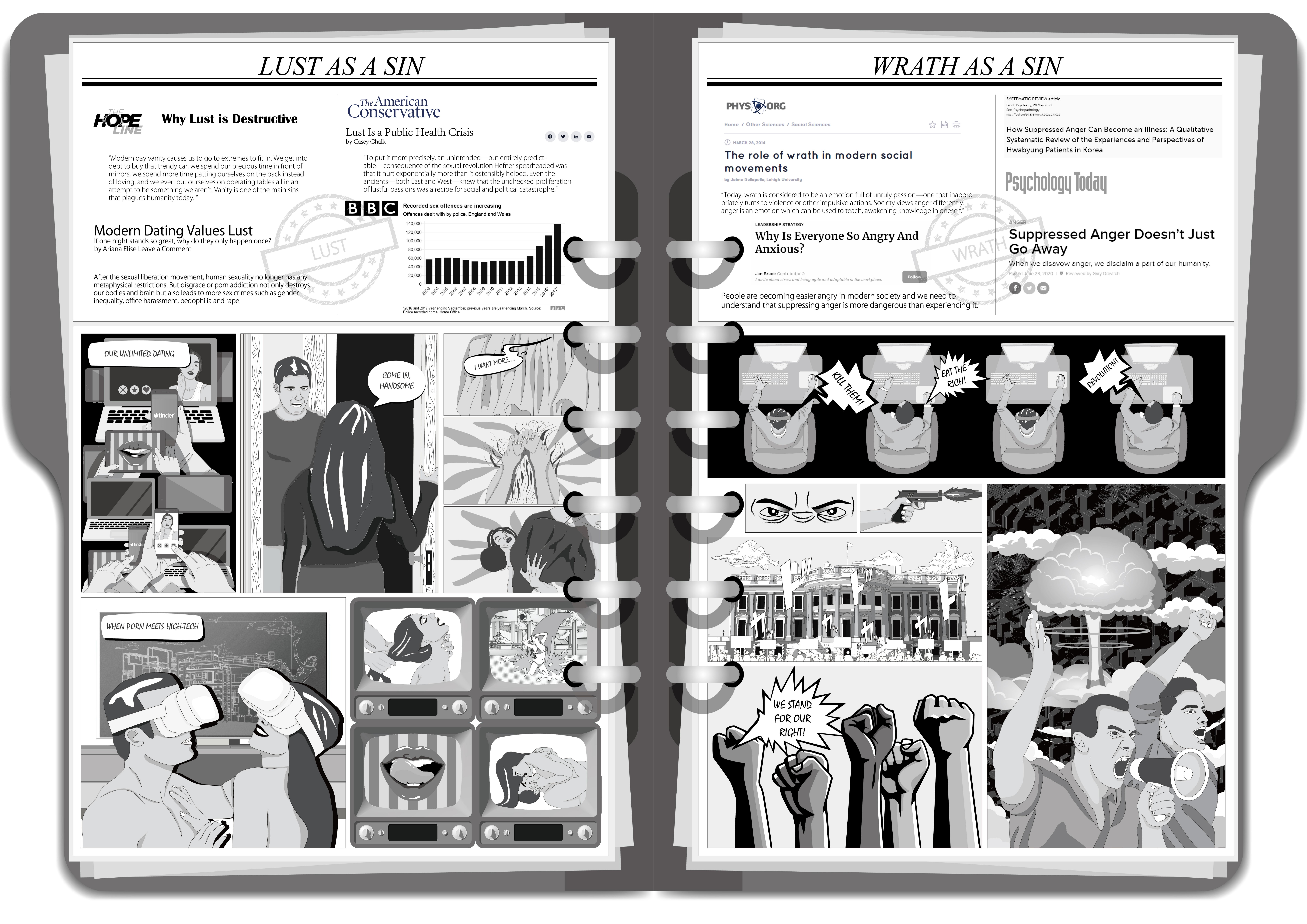
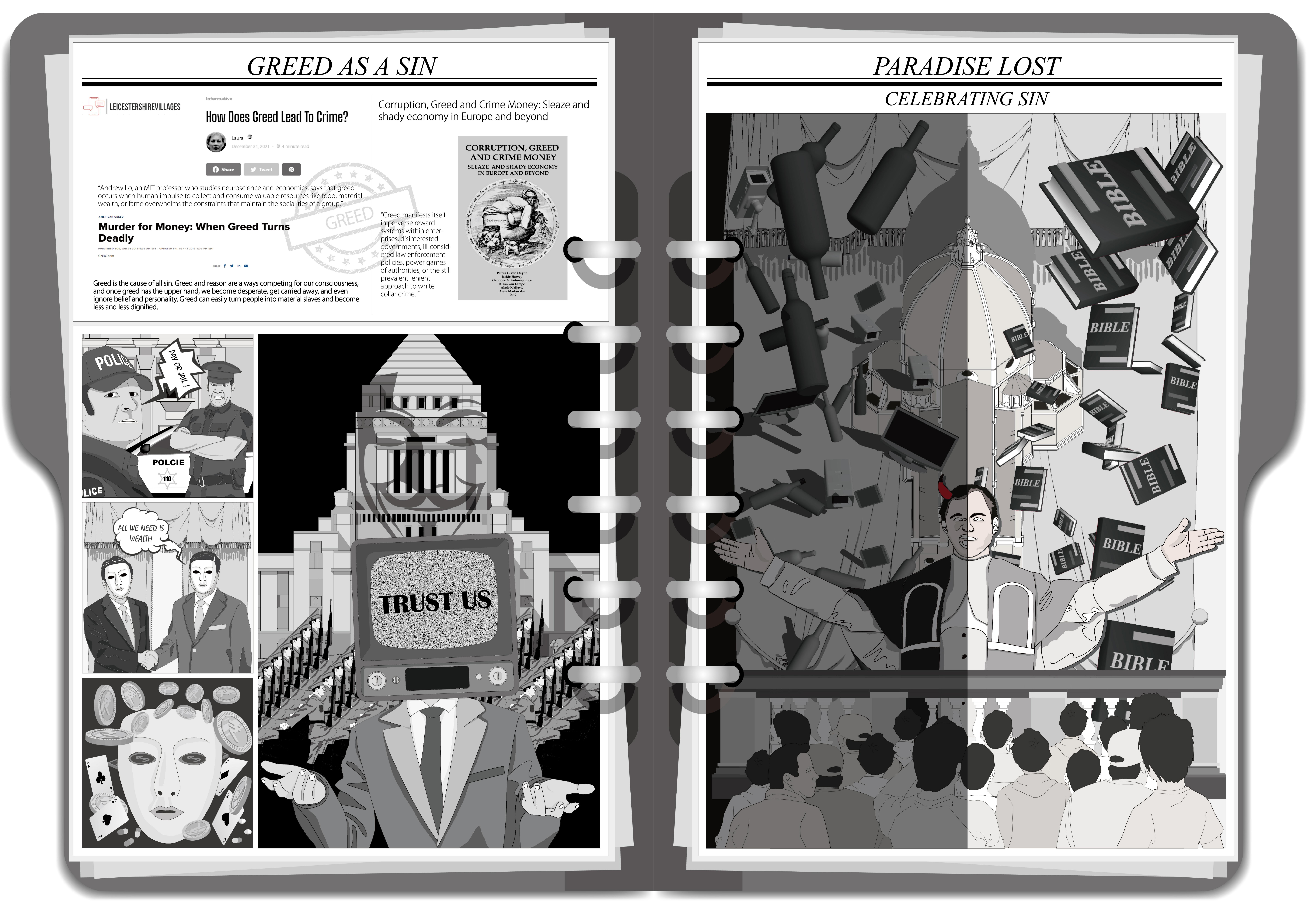
A long time ago, religion was the only standard that led people to obey and be good. Then, laws and social norms replaced religion and became the standard for people in this world, shaping everyone with same standard to prevent people from going down the wrong path. We came to the secular age. Stability, healthy, rationality and efficiency are important rule for measuring us and society. However, the attitude of “active life” leads to anxiety and hysteria, and we not only fail to achieve freedom, but fall into various forbidden places because of laziness, rebellion and immorality.
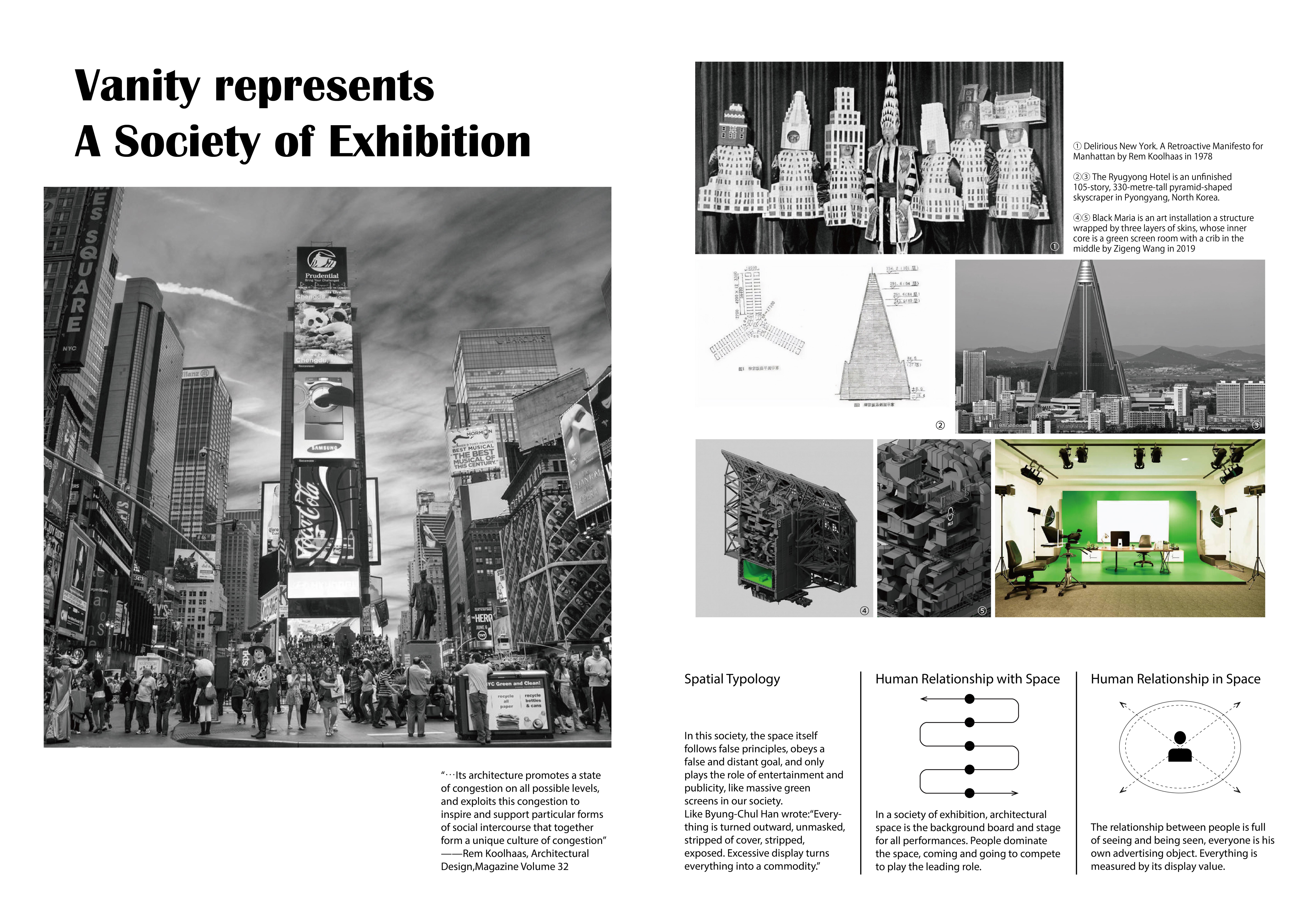
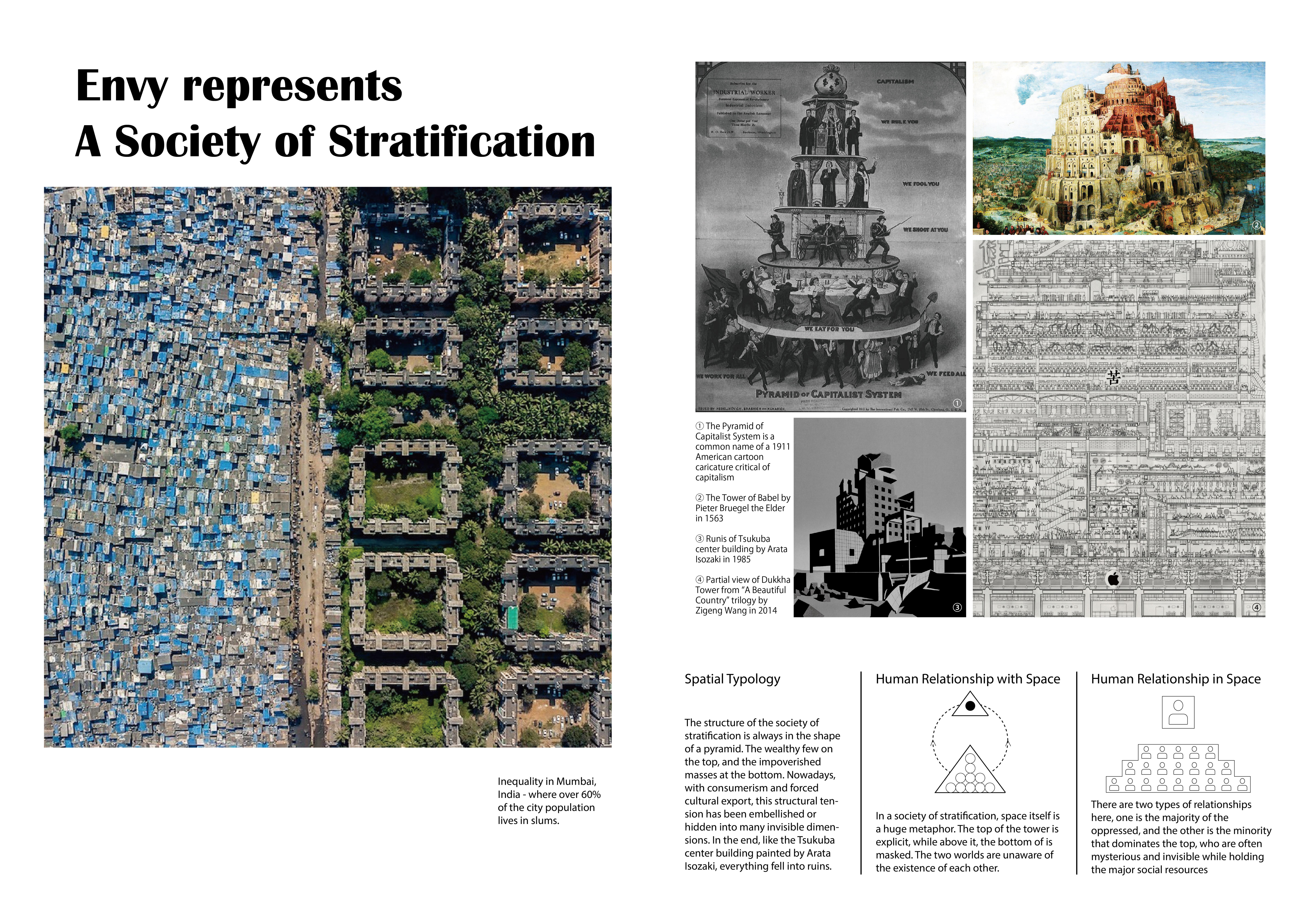
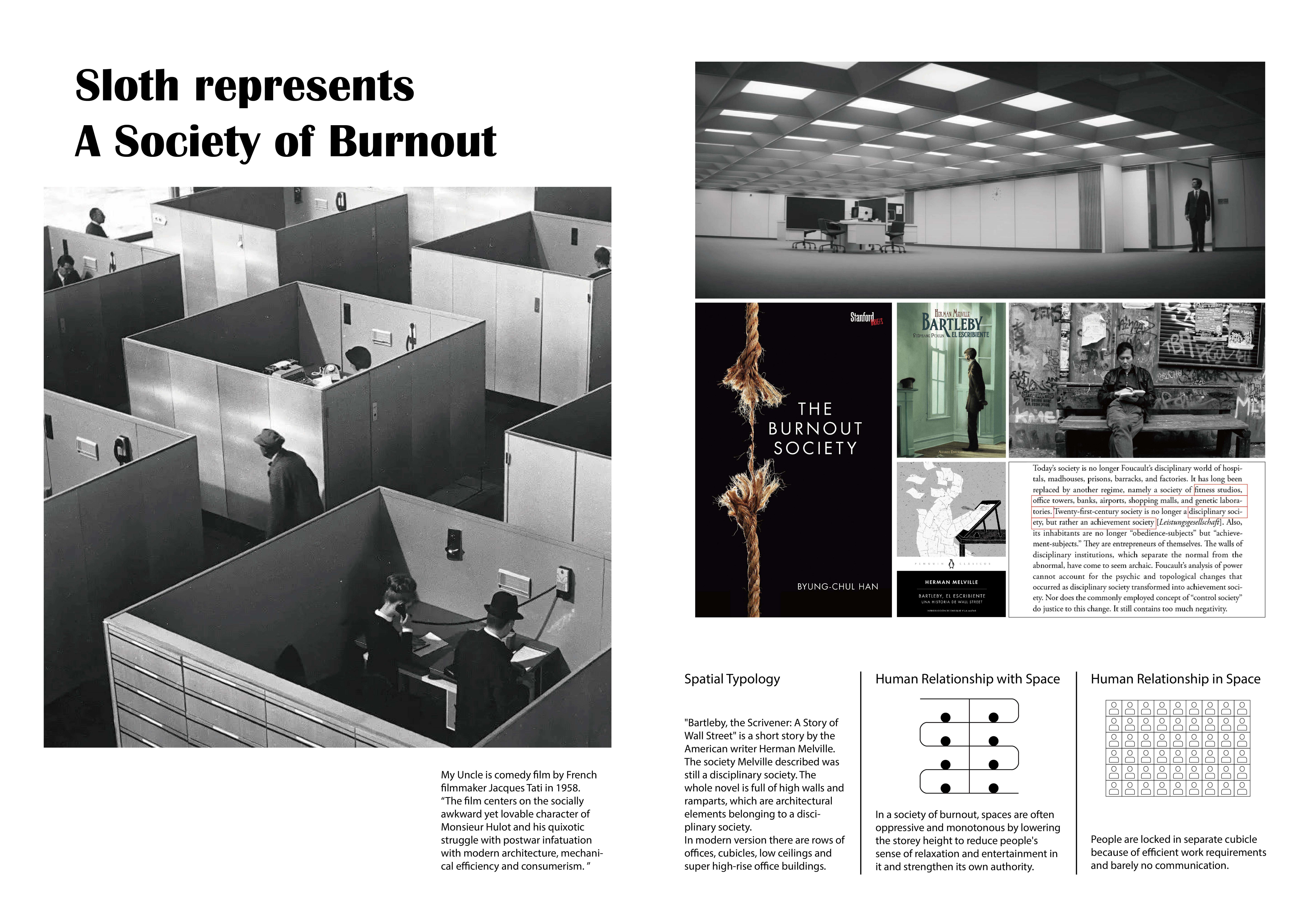
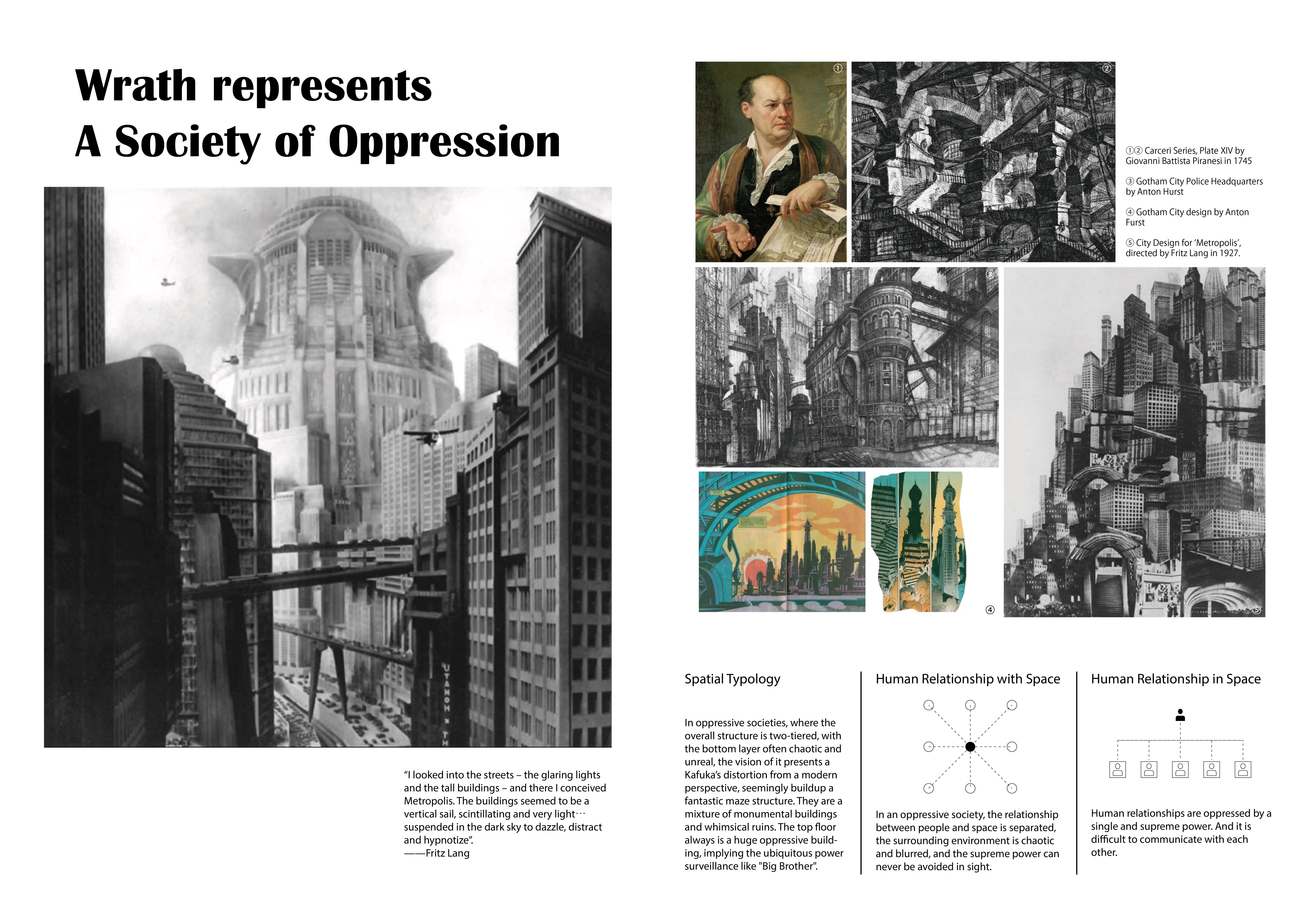
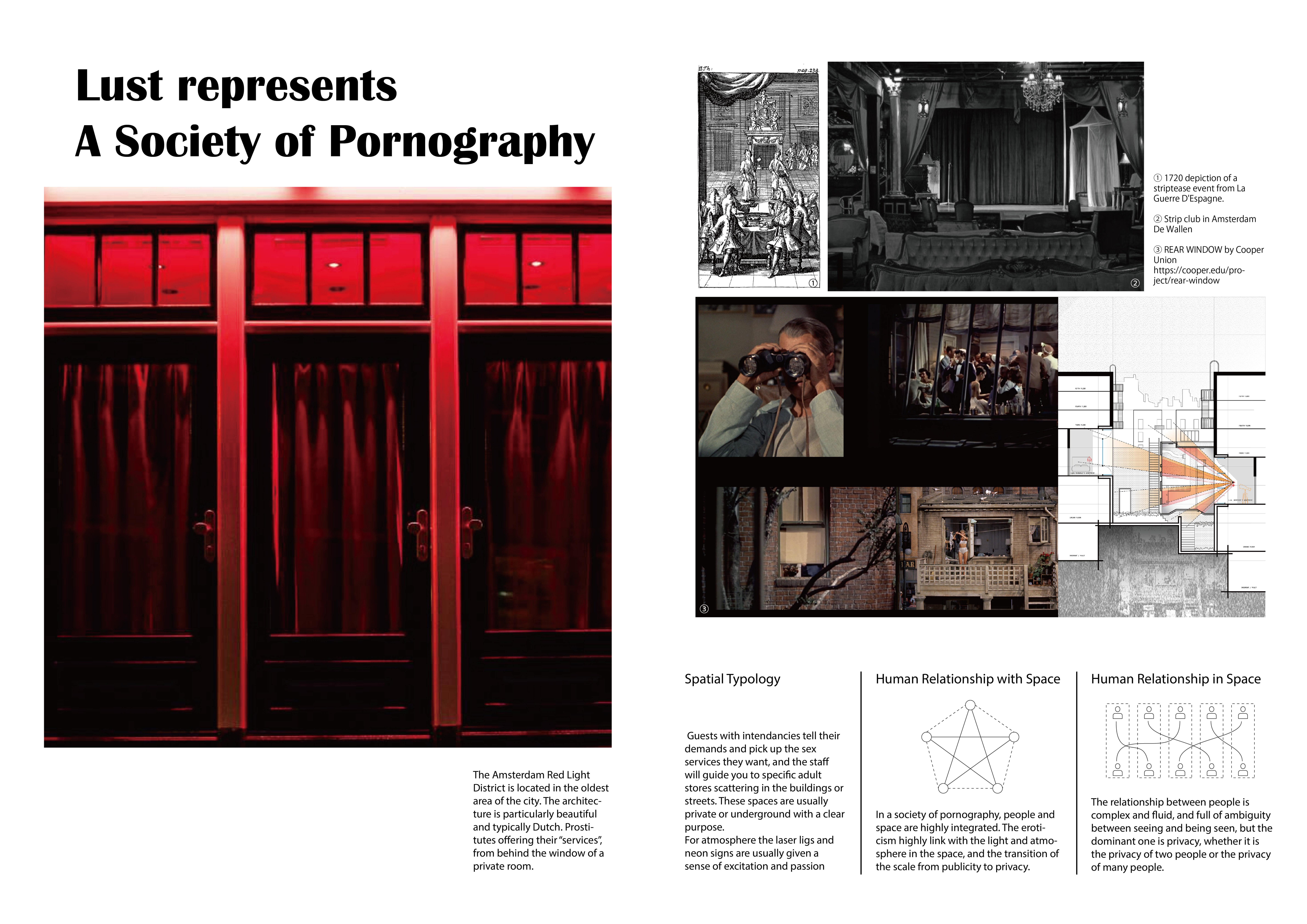
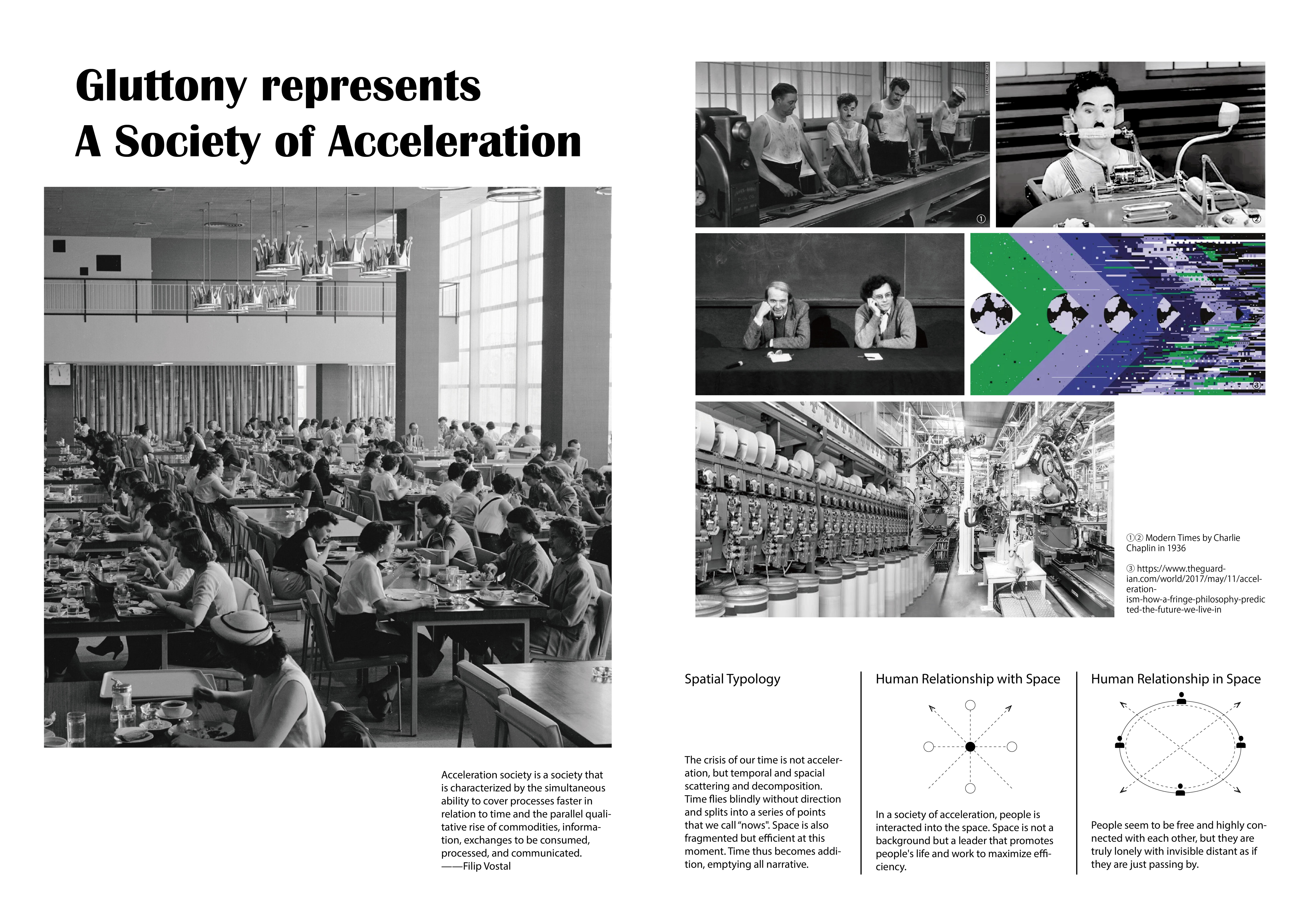
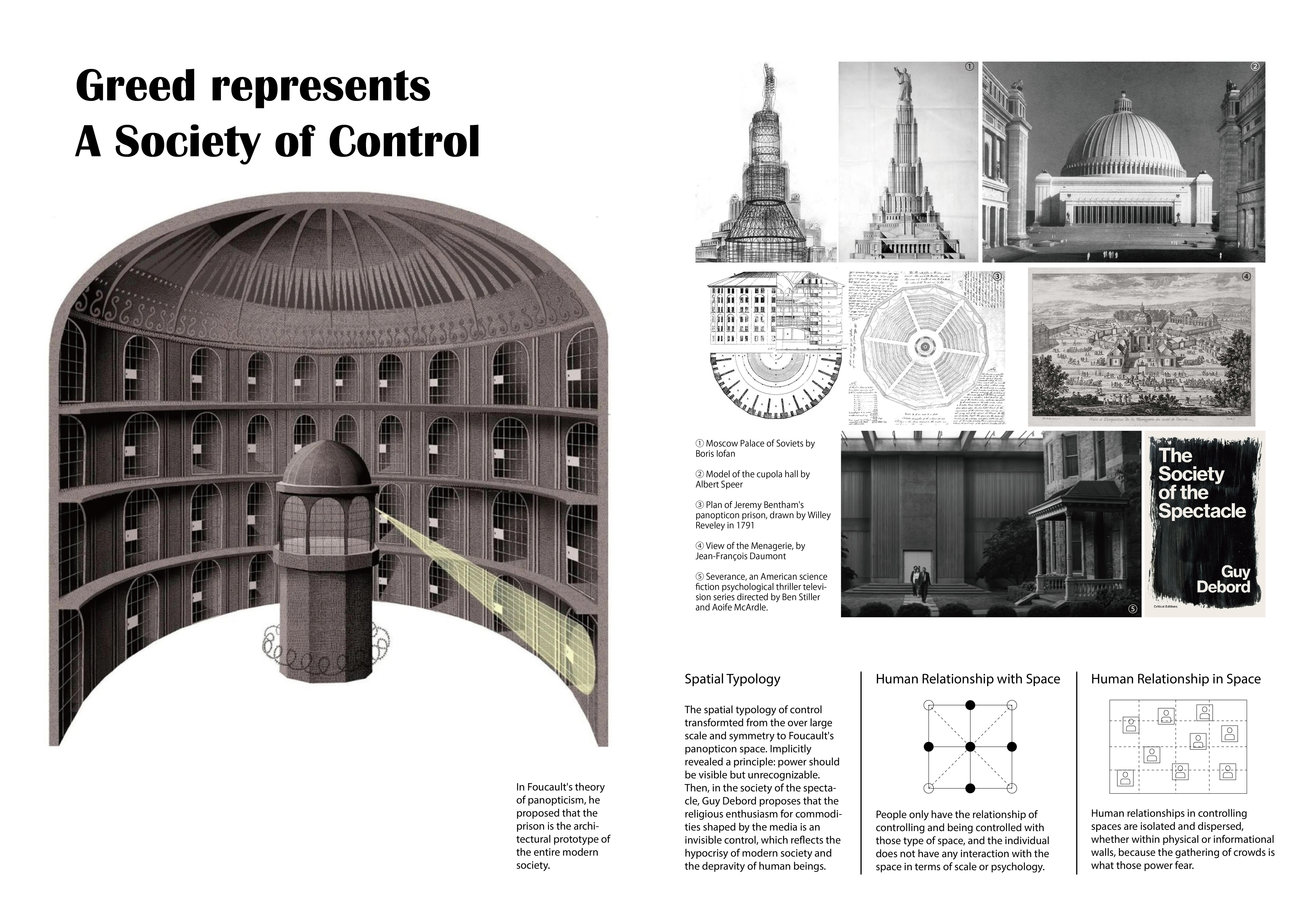
Thesis Statement:
As a critique of discipline of urban space, the project converts the Vatican City into a dystopia holy utopia veiled in a facade of sin. Different programs which are all related to an anti-social crime, as a metaphoric interpretation to seven deadly sins from Christianity, will be planned and revealed in the streets, historical building, parks and river of New Vatican city.
Like Noah’s Ark, the New Vatican City will be an adaptive giant where people voluntarily become prisoners of it. Equal rights are for all citizens, pilgrims, tourists and refugees to share. Festivals, holidays and leisure is consecrated when sin will no longer be the rule of morality. It is the ciy that fully accommodate individual desires, everyone is both the controller and the controlled, the monitor and also the monitored.
It aims to benefit the royal government then reflect on morality and freedom by demonstrating the scenarios where sins are taken to establish an architectural enclave.
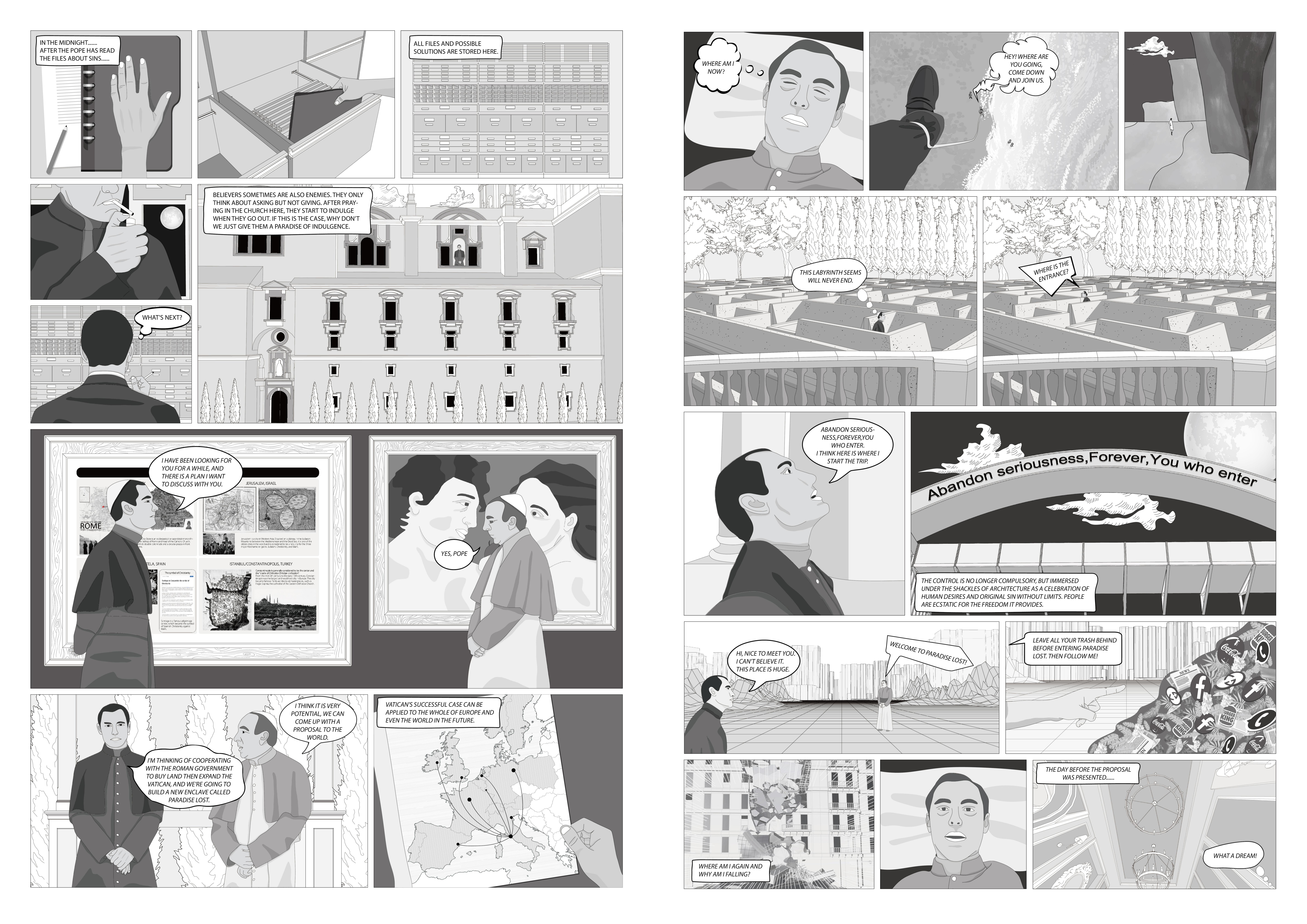
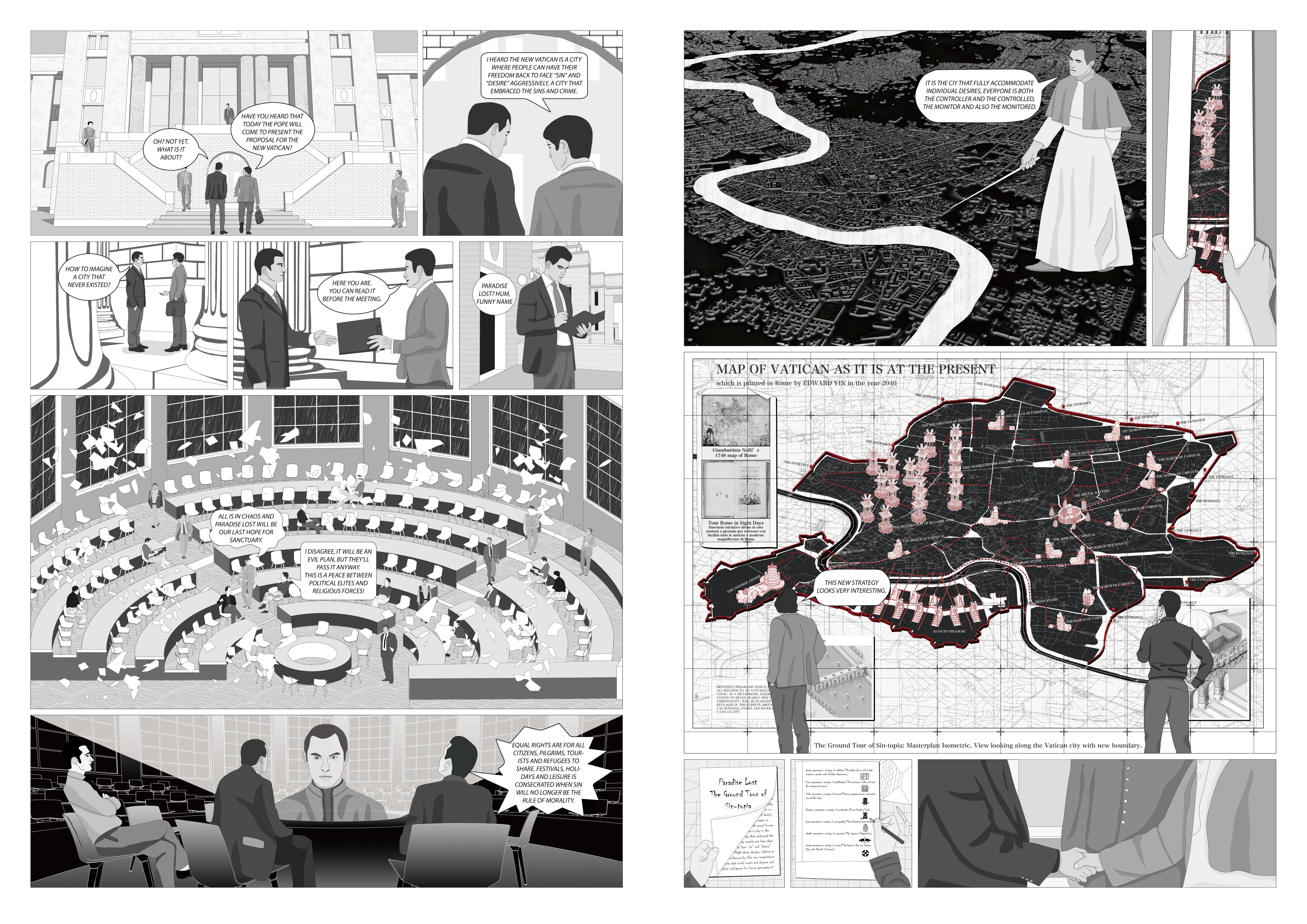
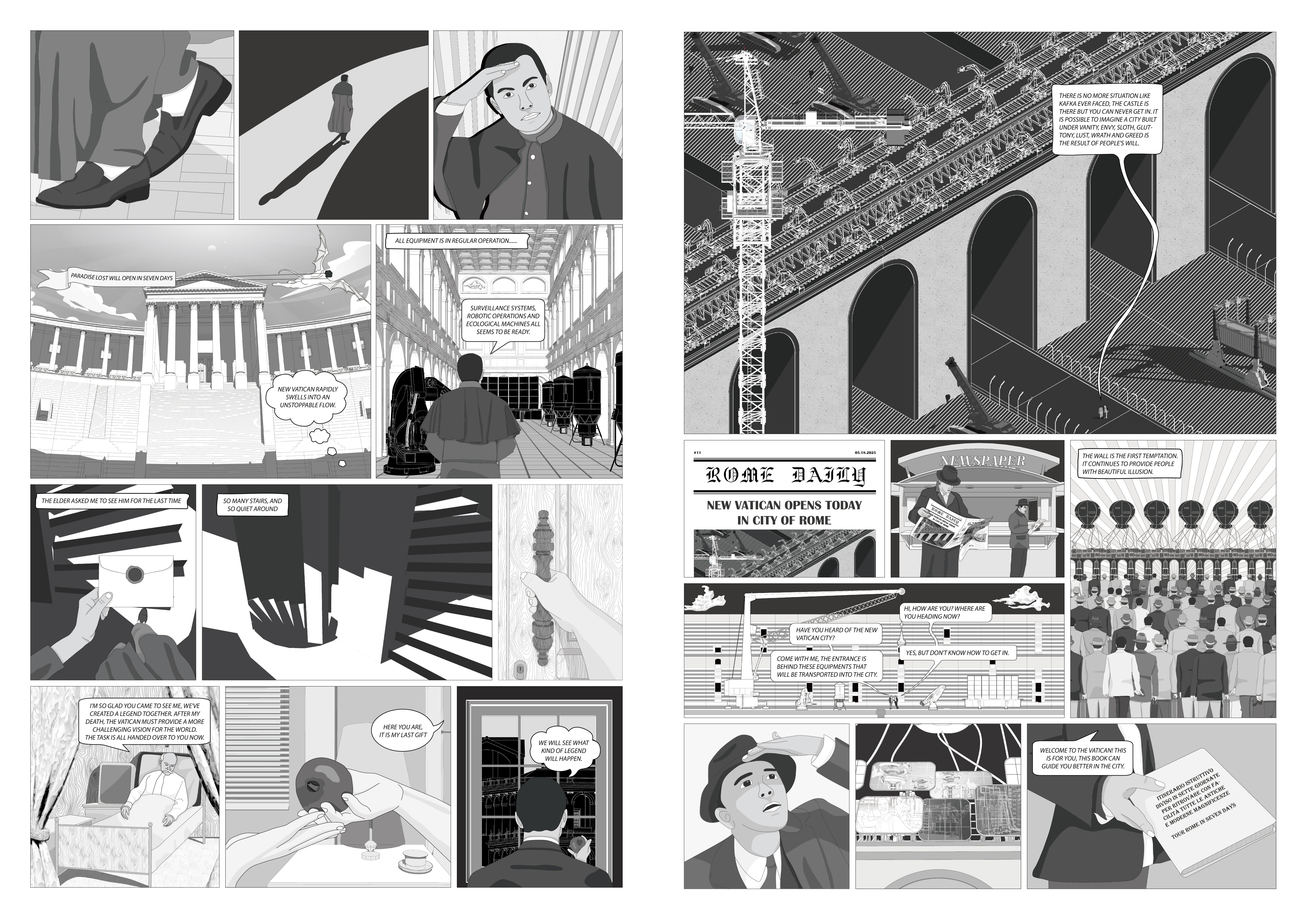


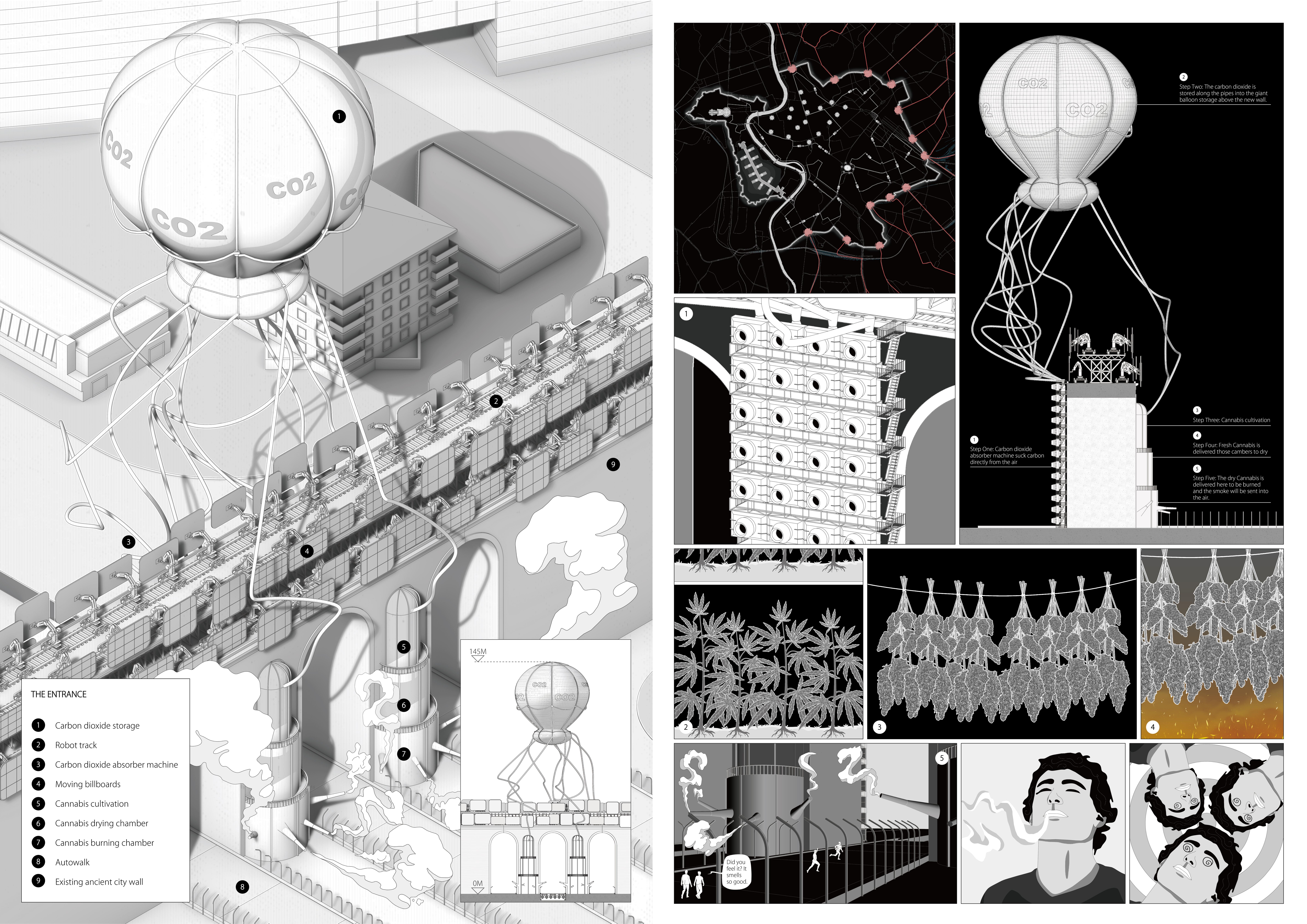
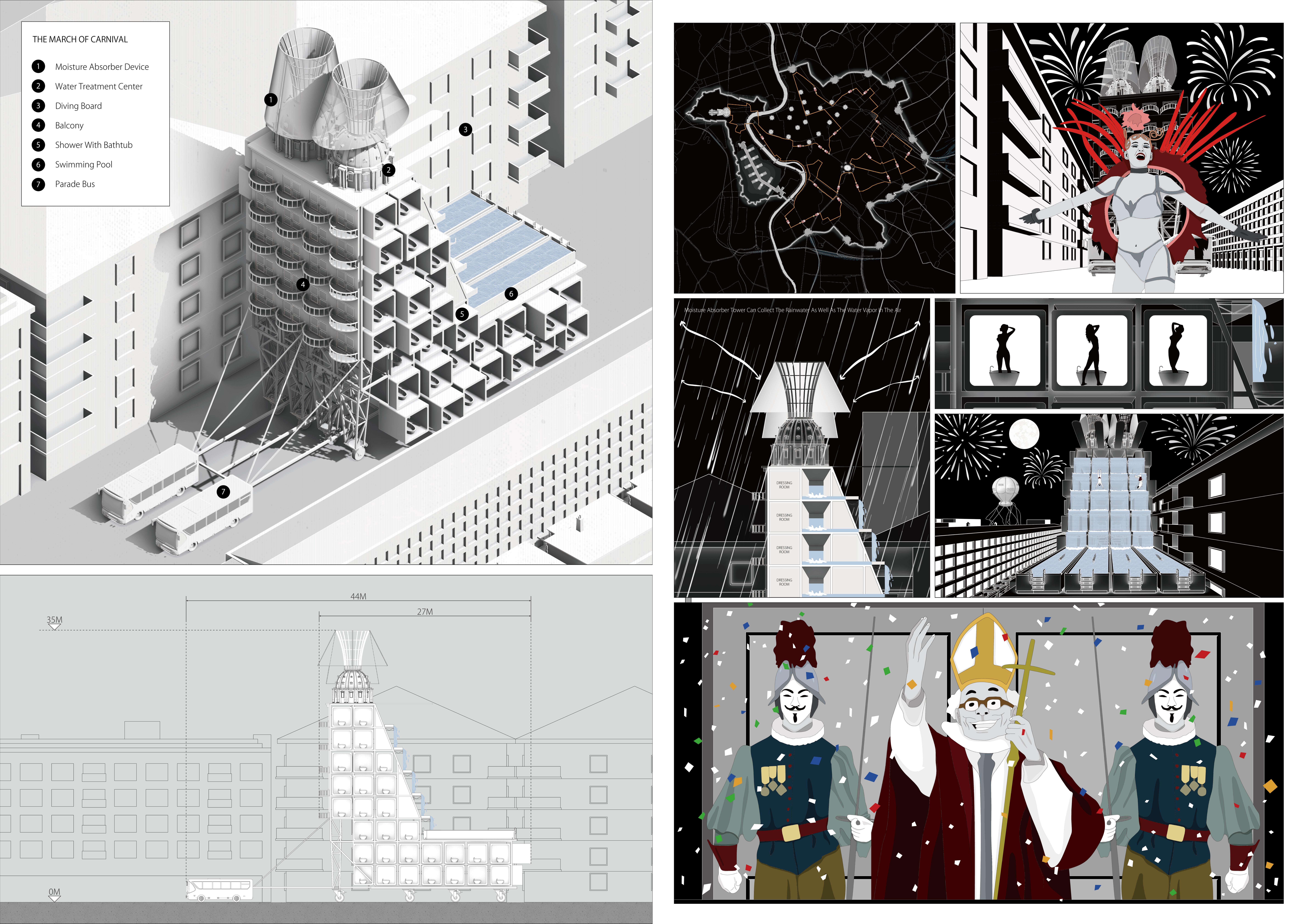
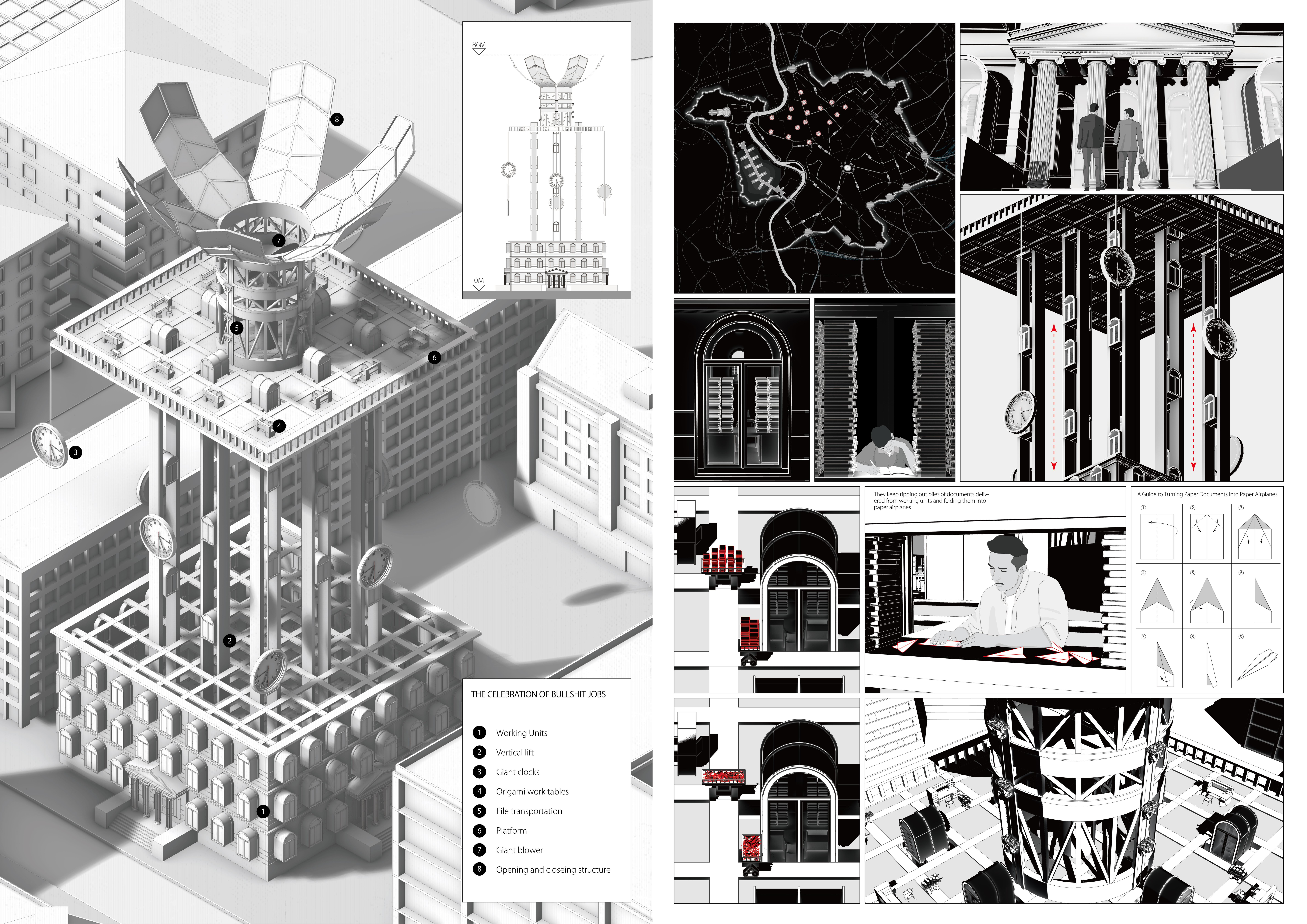
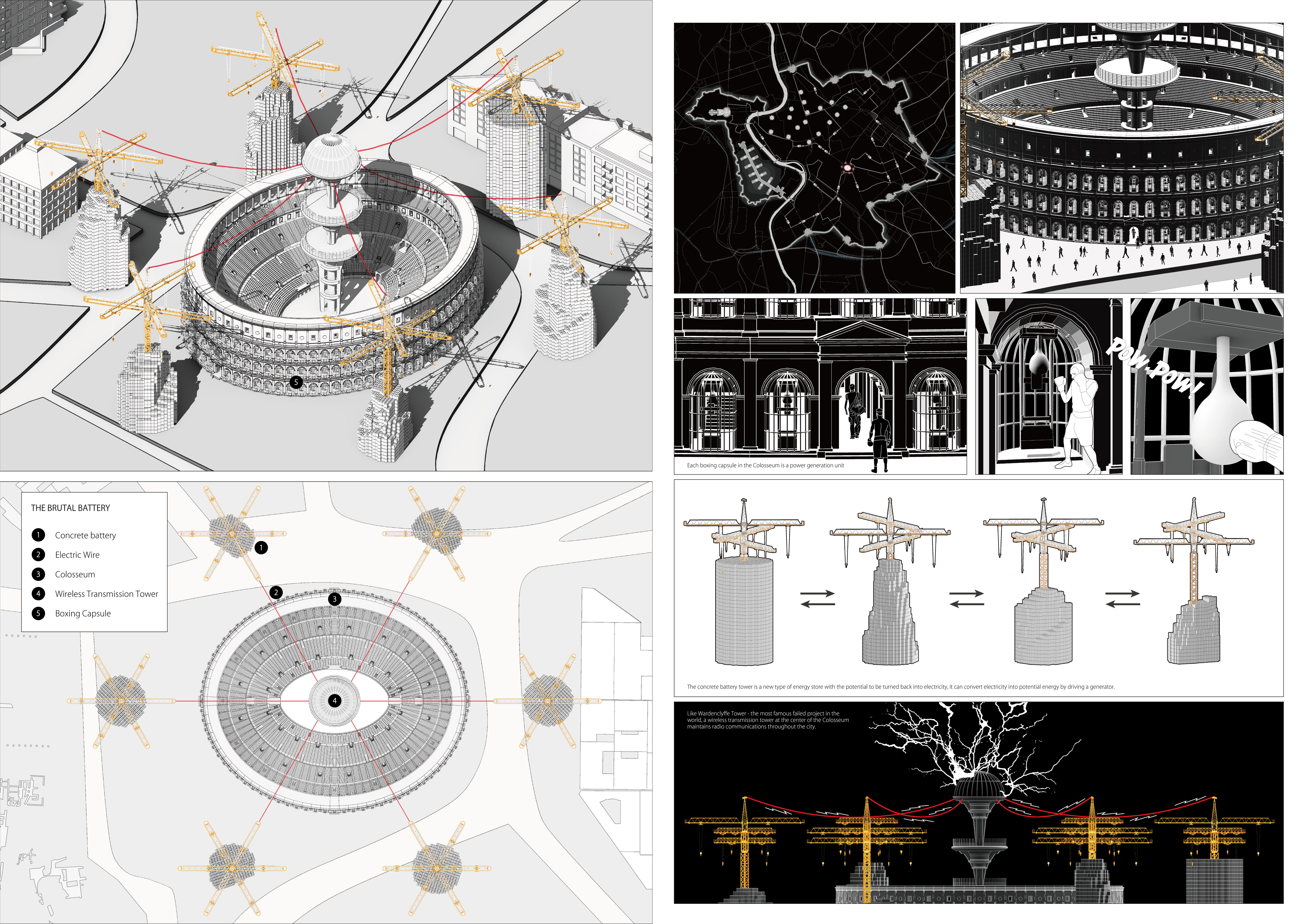
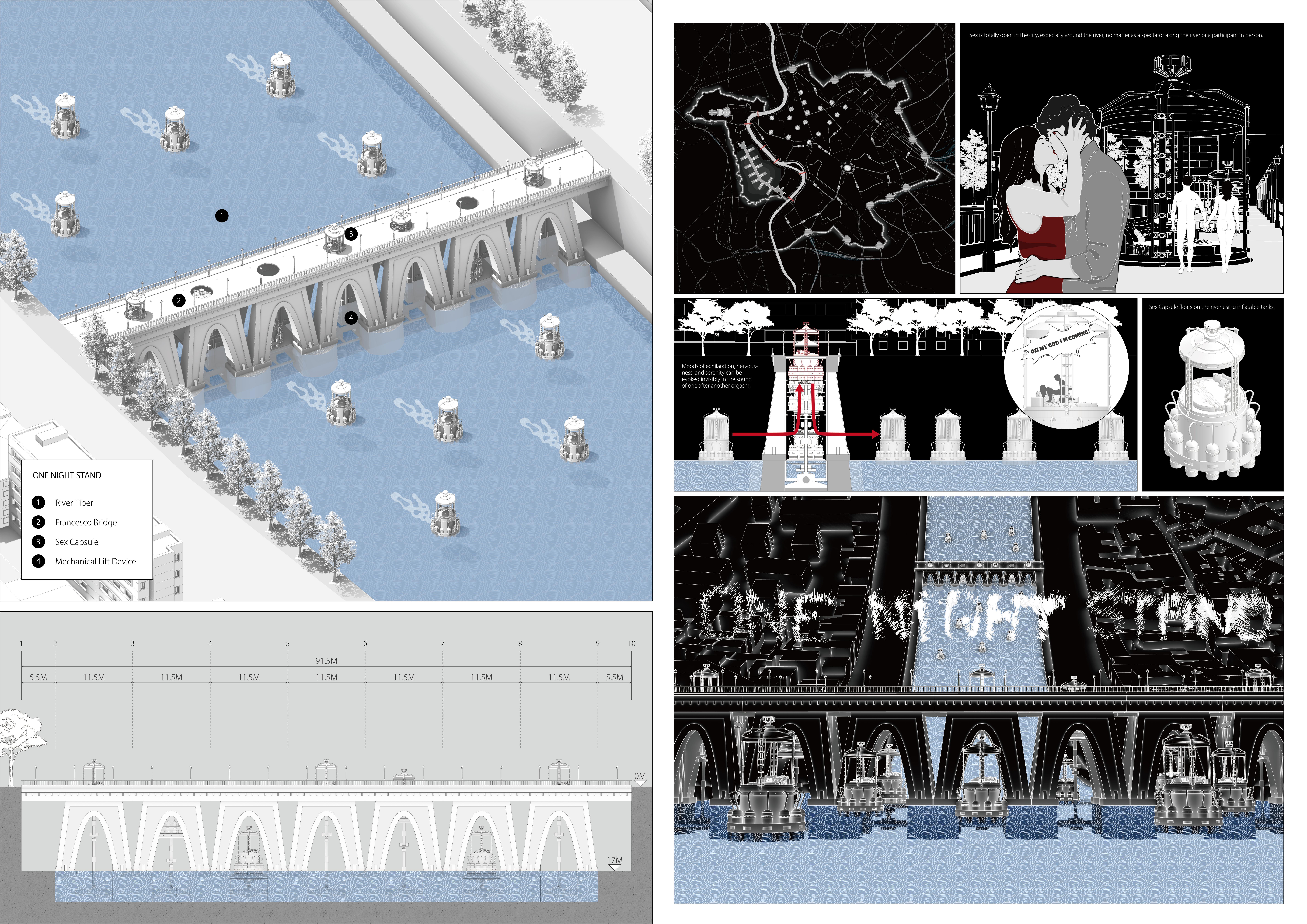
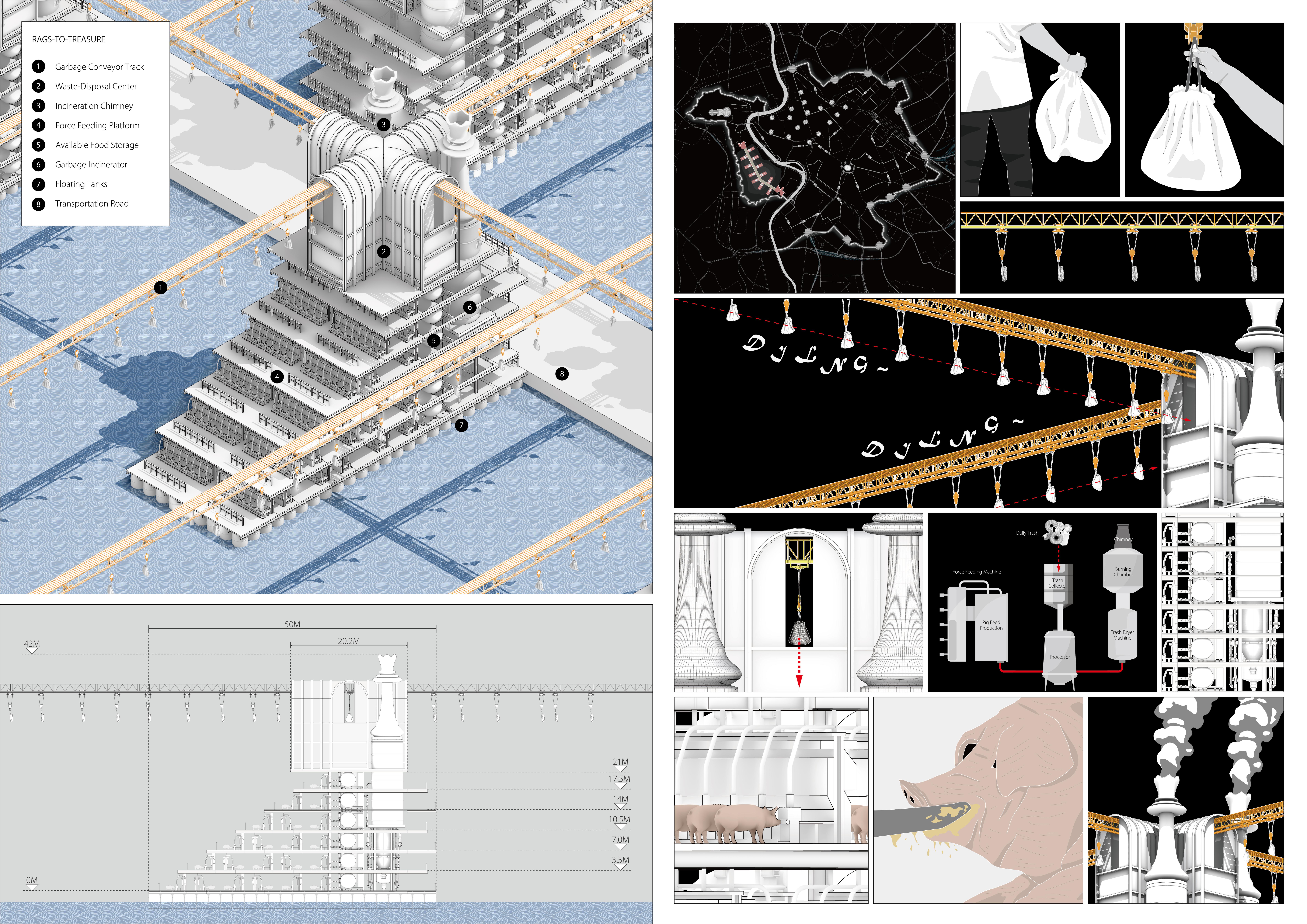
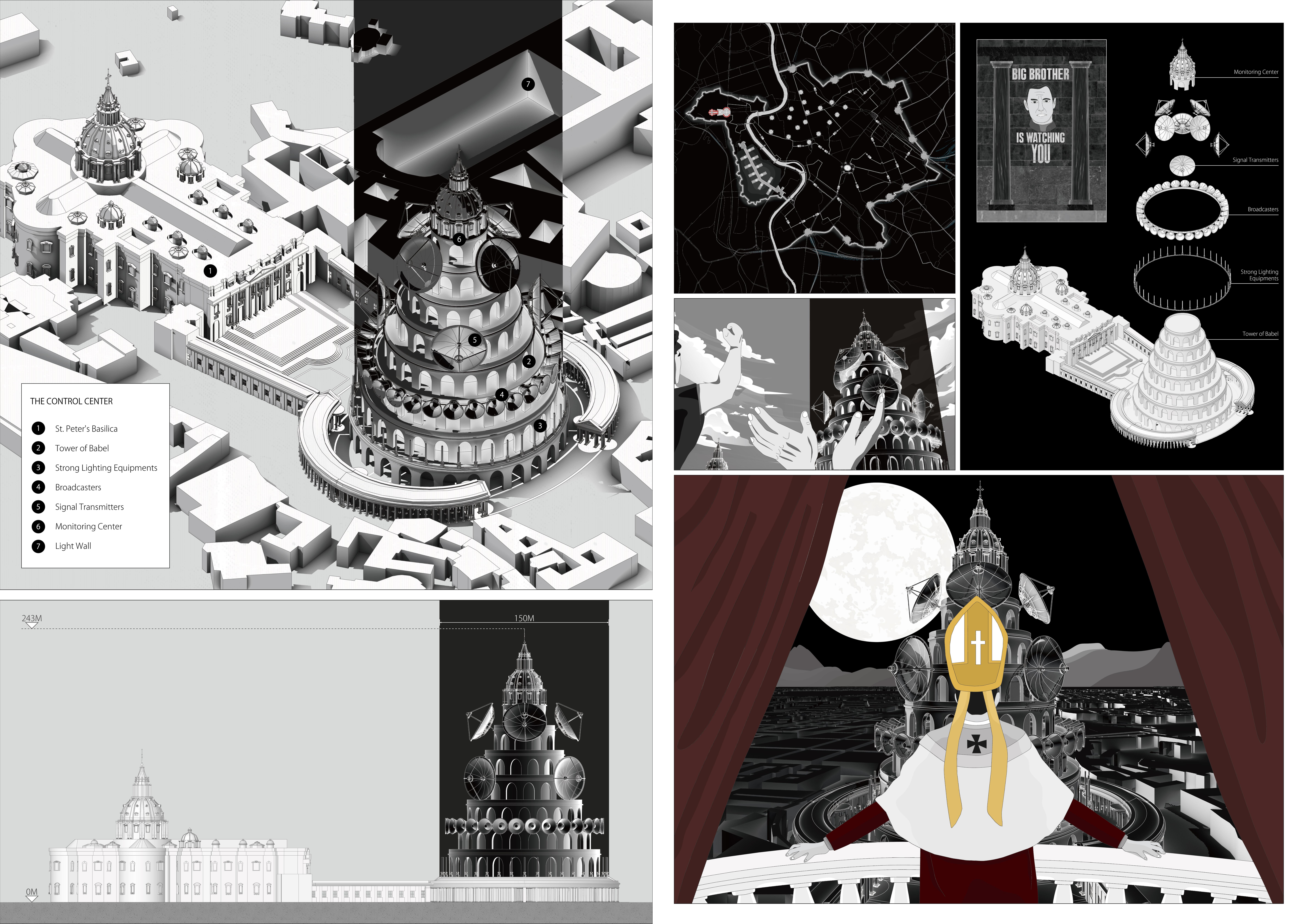
Manifesto and Programme:
There is no more situation like Kafka ever faced, the castle is there but you can never get in.
In the modern society where all divinities and festivals no longer exist, all the celebration of sins in the new Vatican City commit not to timid improvements but to the provision of totally desirable alternatives.
The city built under vanity, envy, sloth, gluttony, lust, wrath and greed is the result of people’s will. From here, the sacred moment(Hoch-Zeit) has reappeared, and people have thus regained their connection with God.
